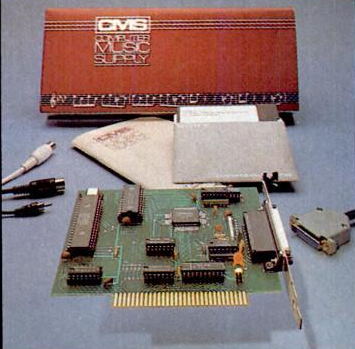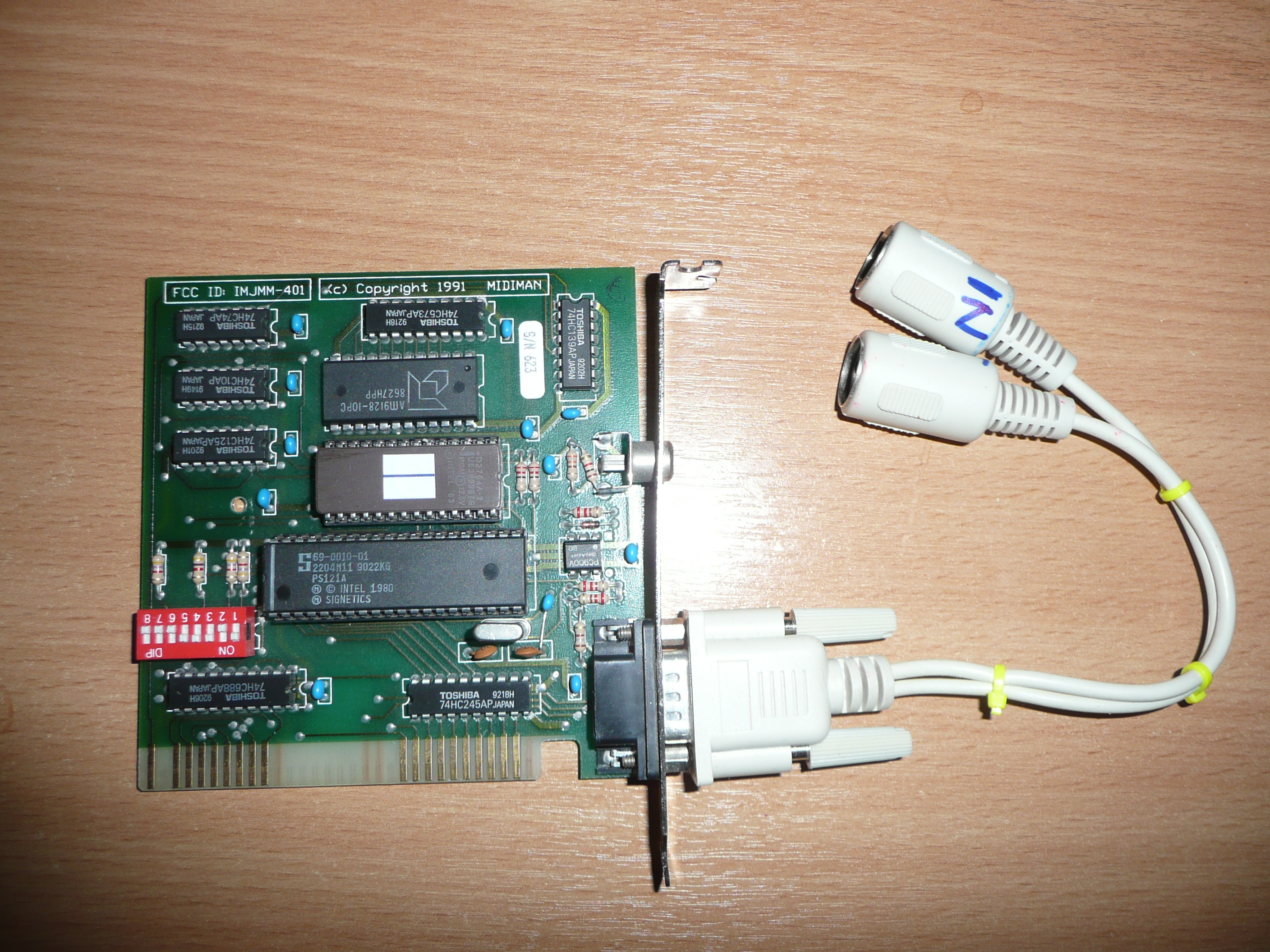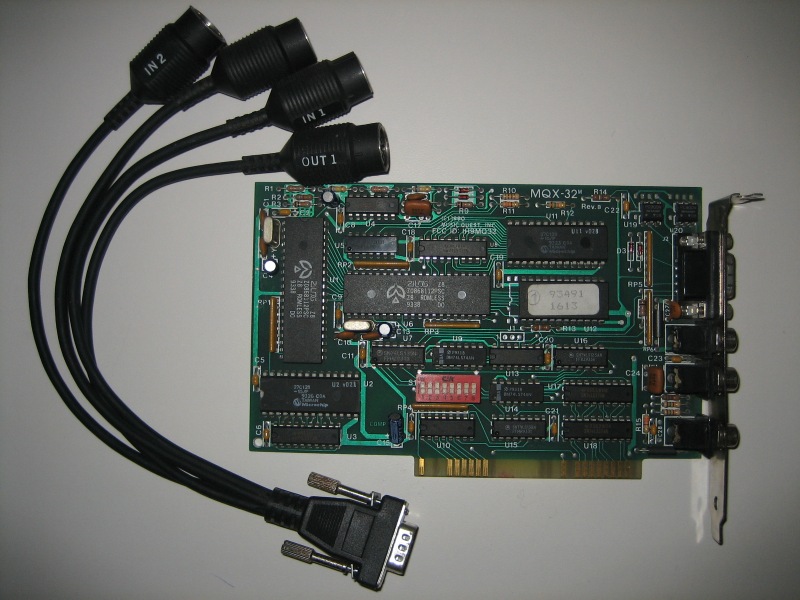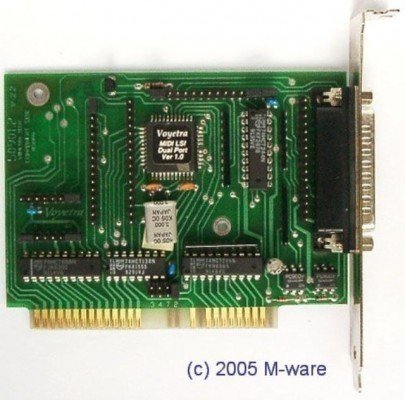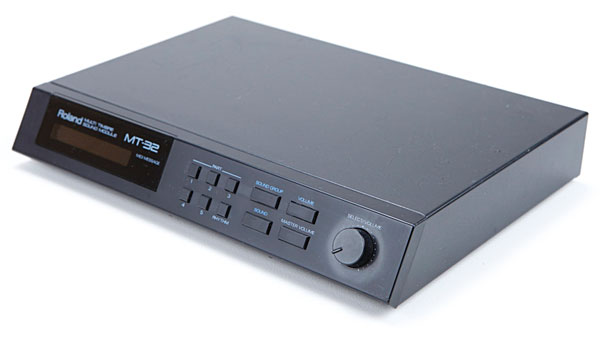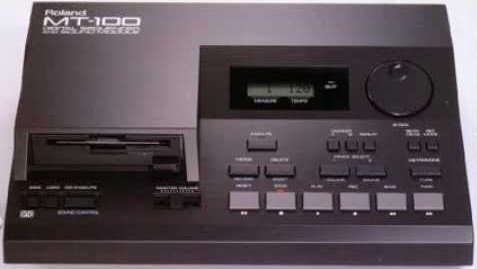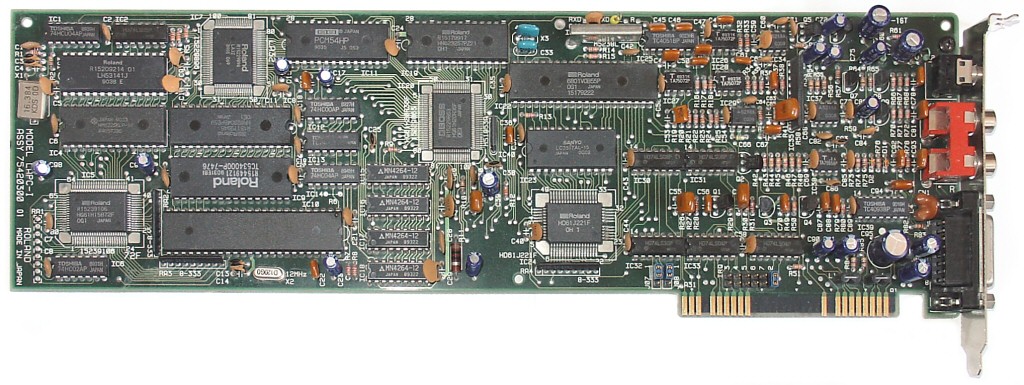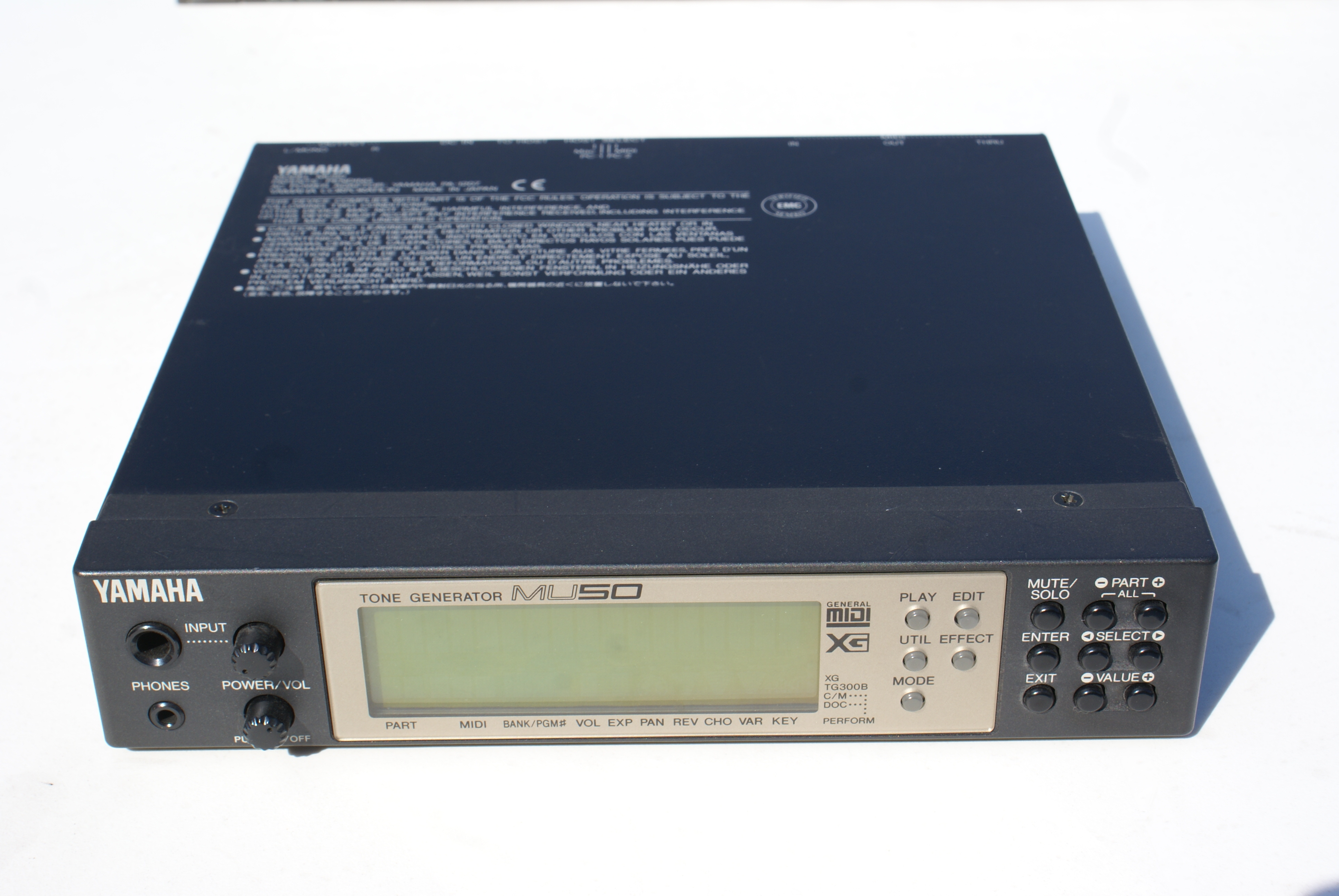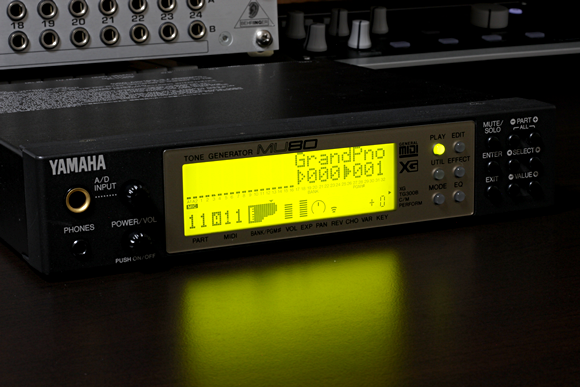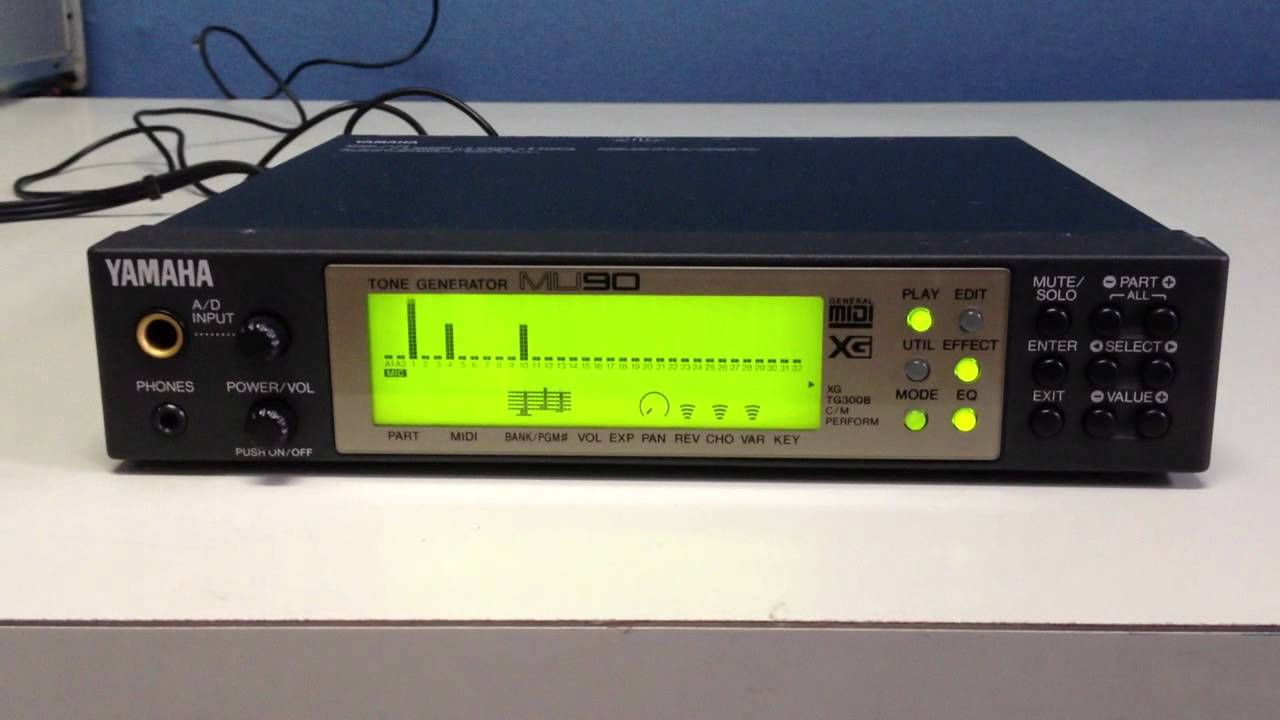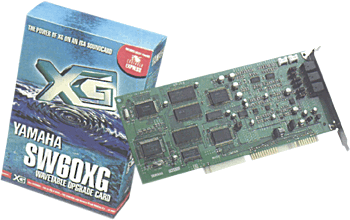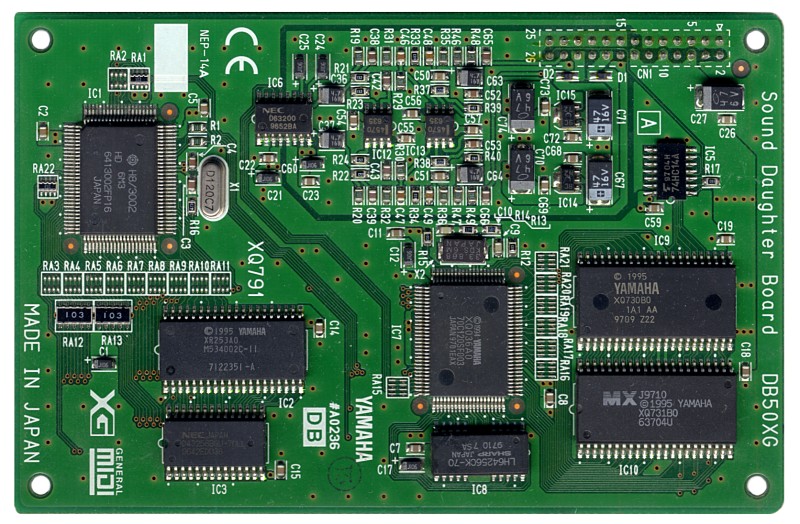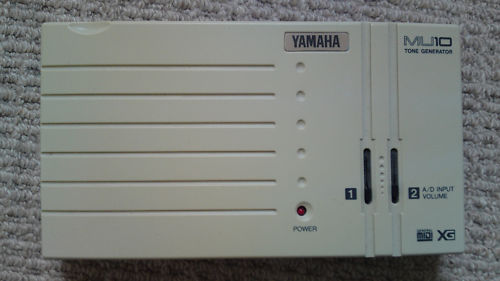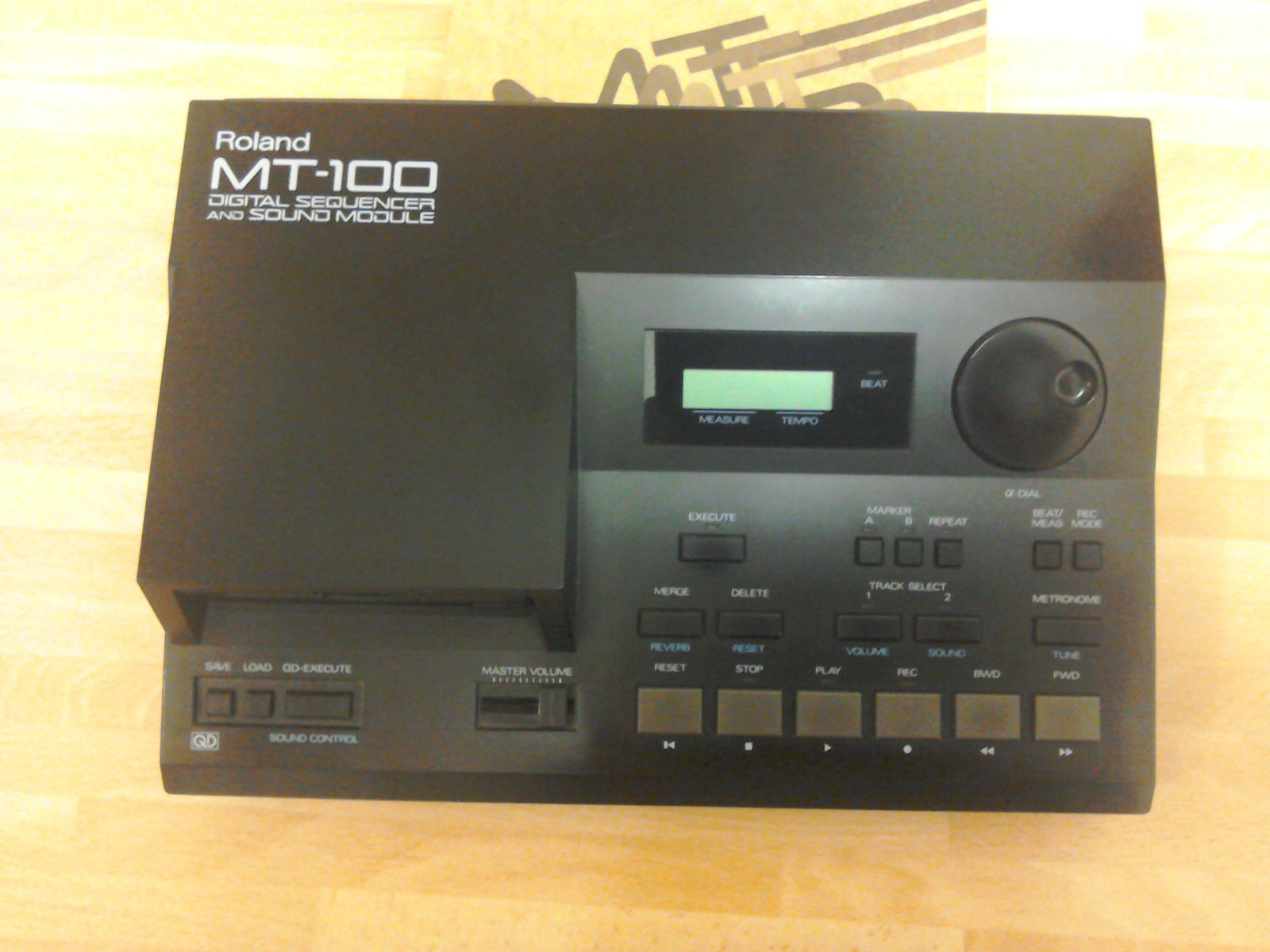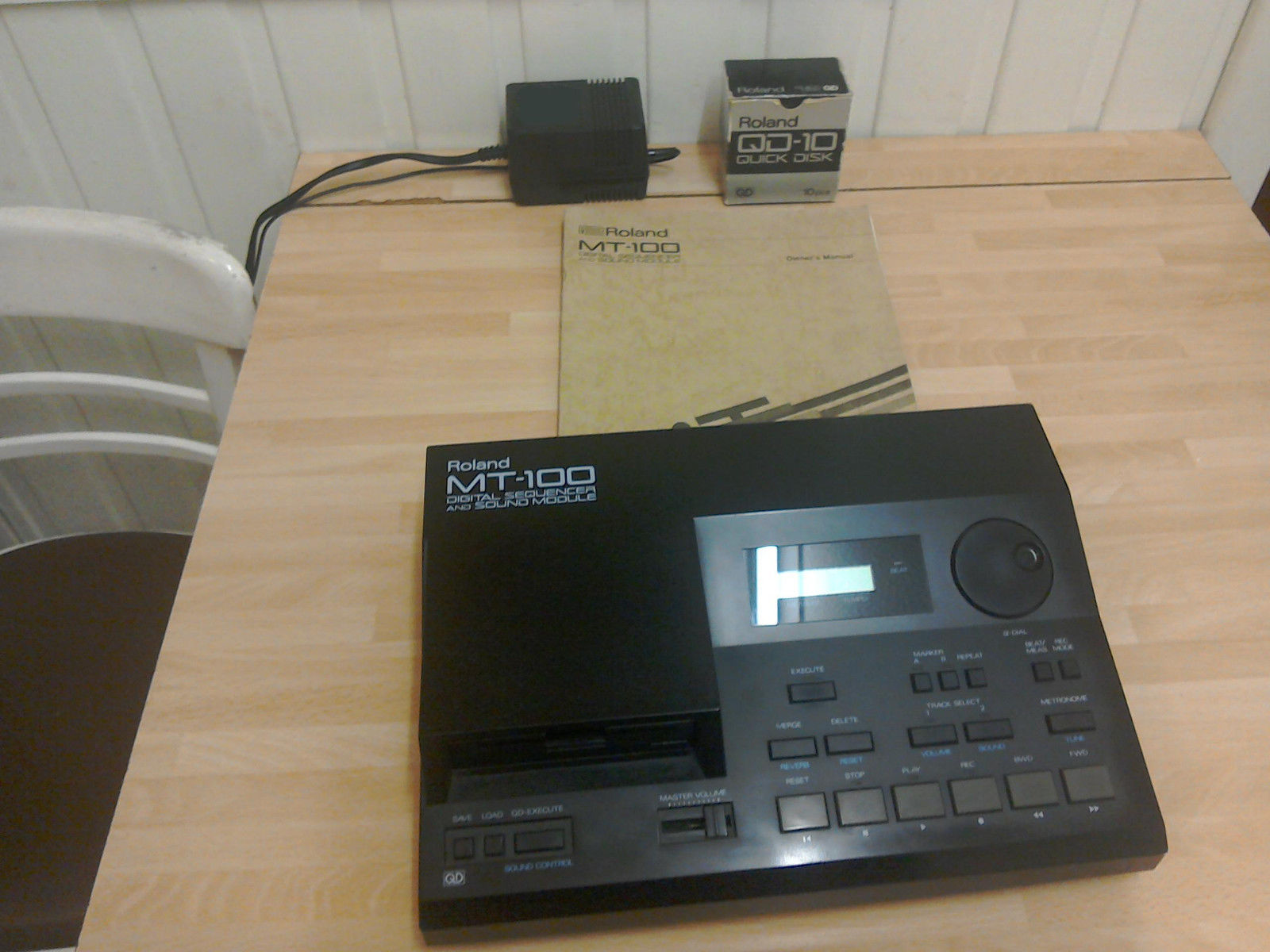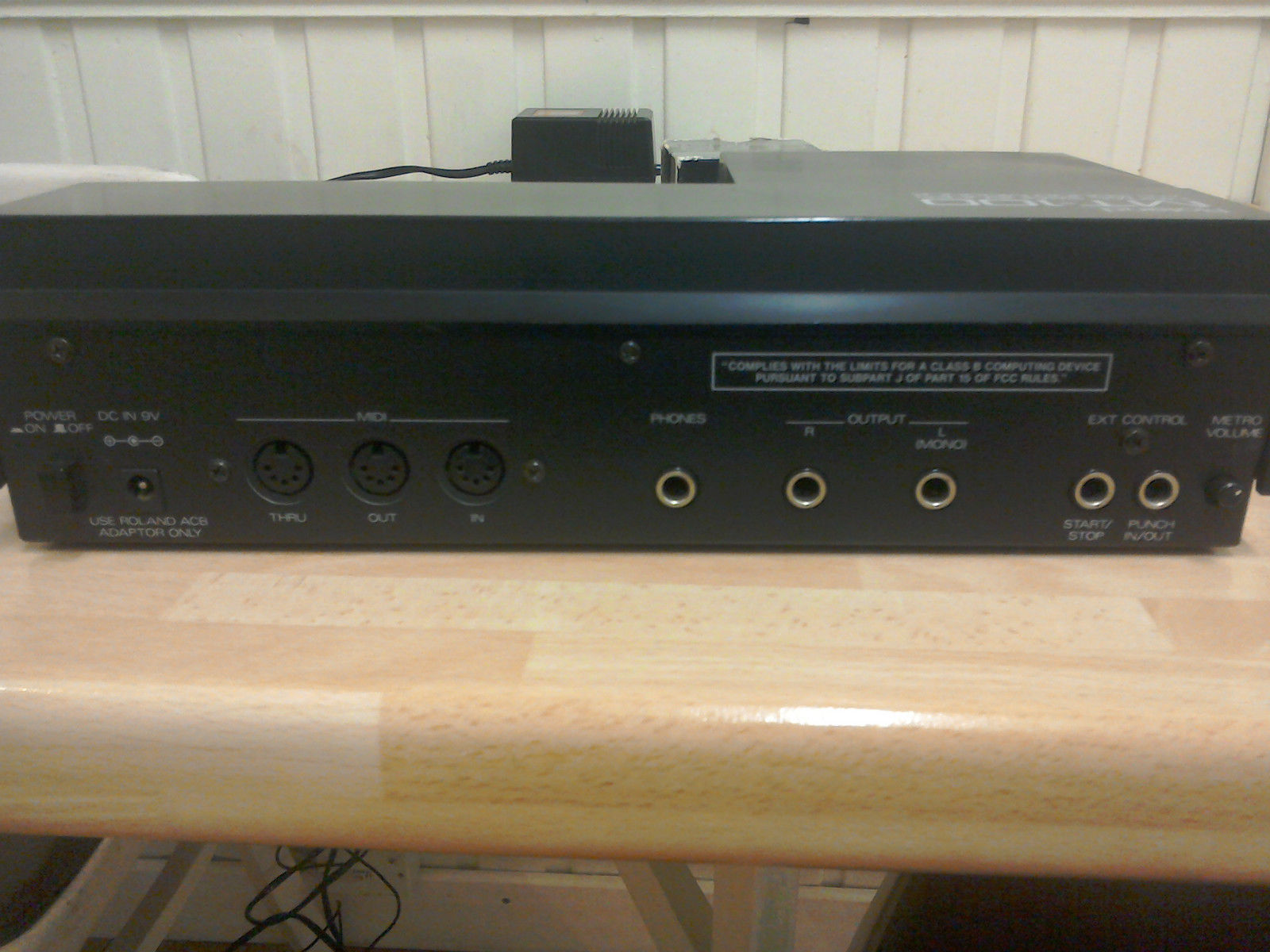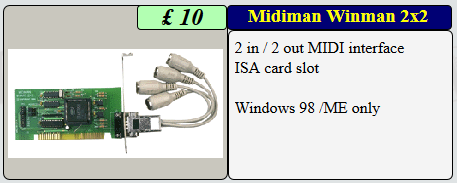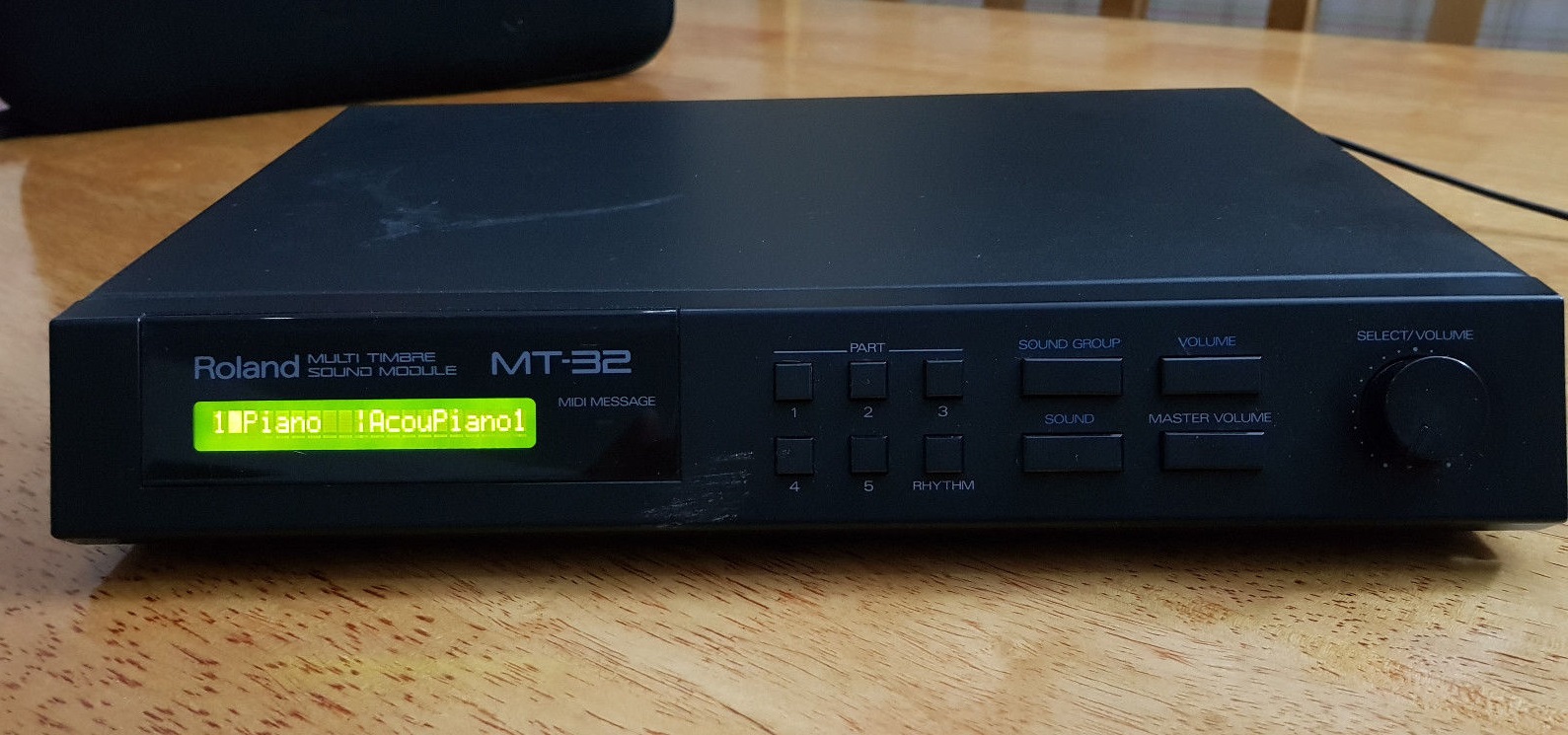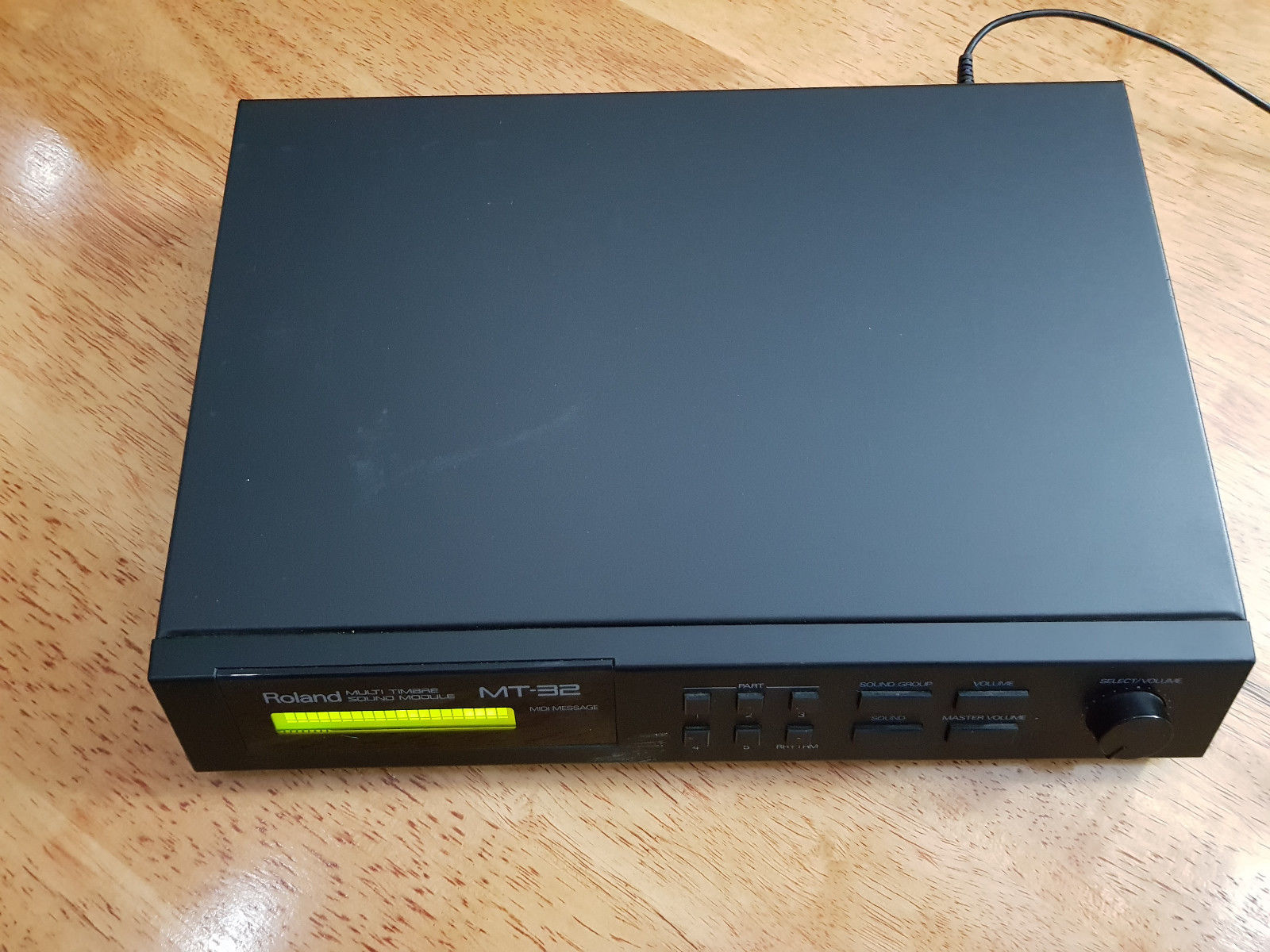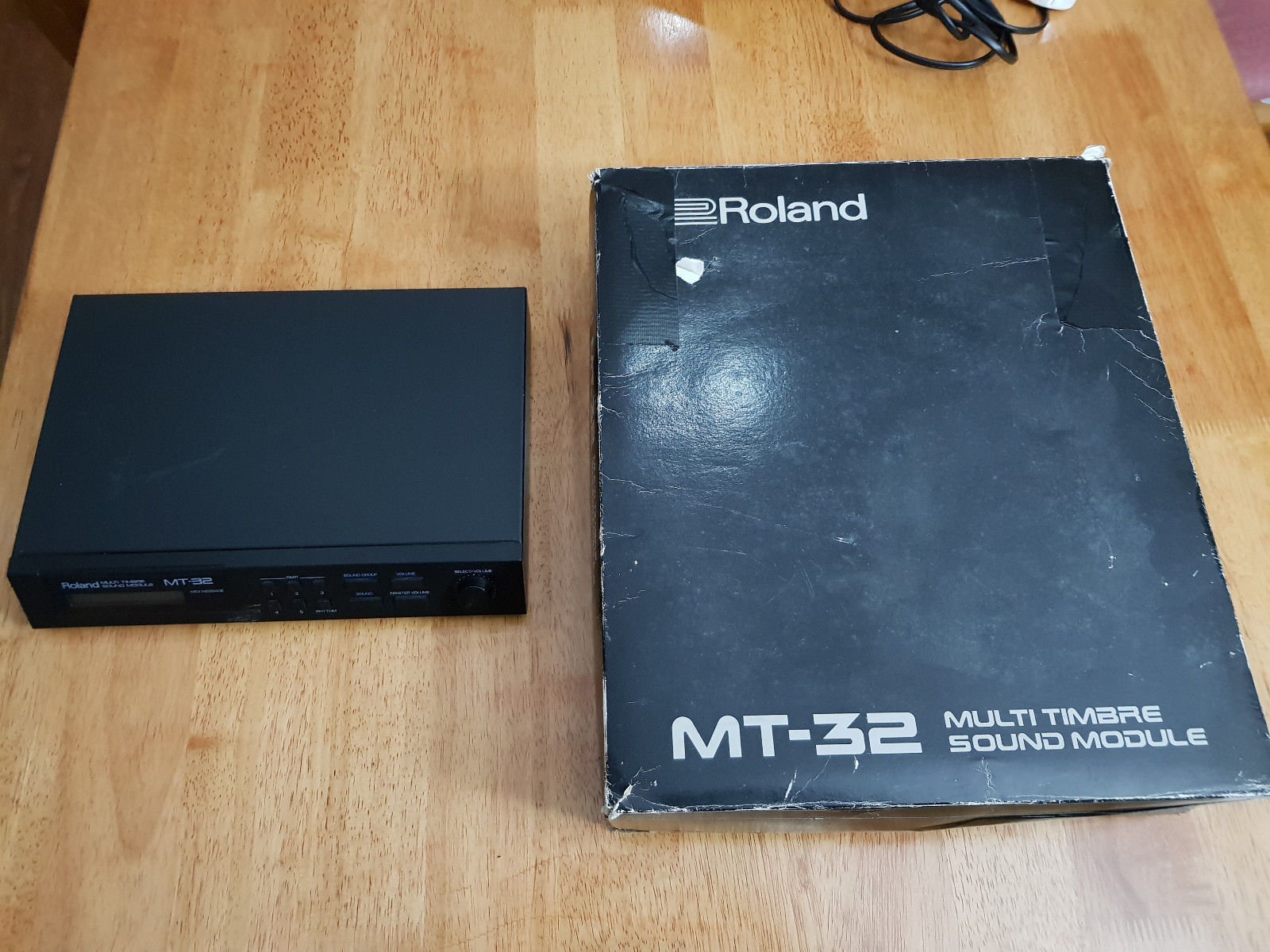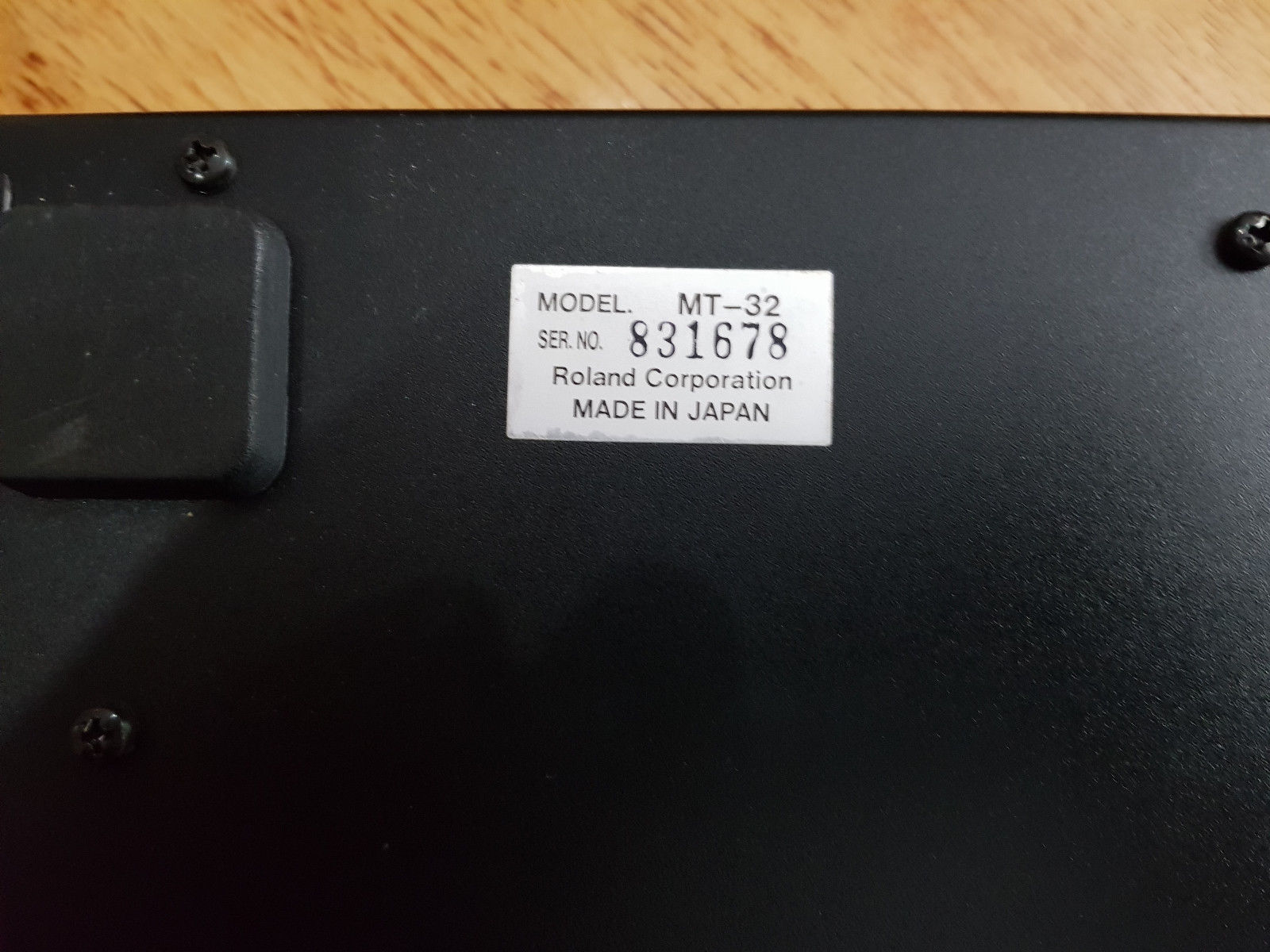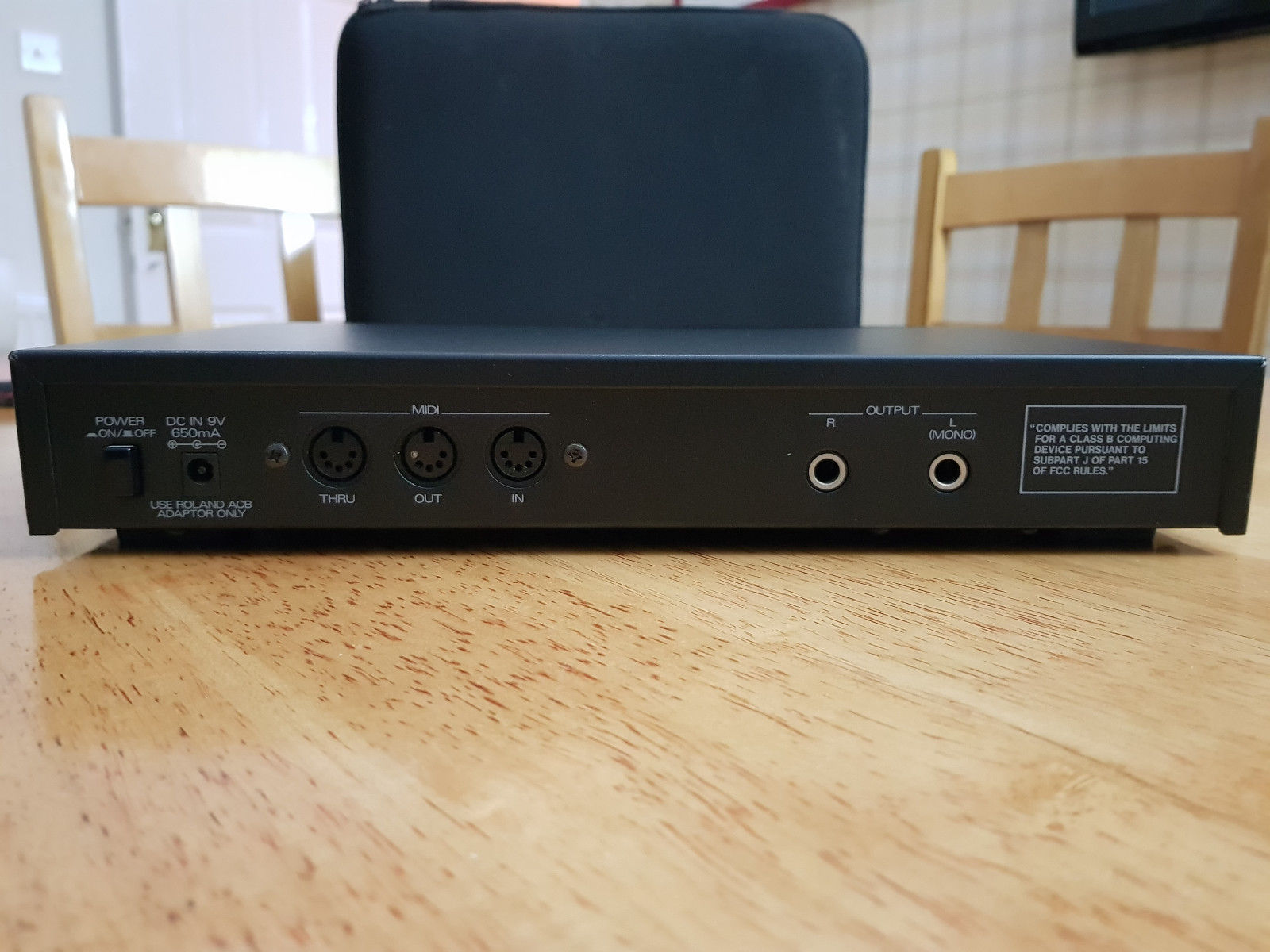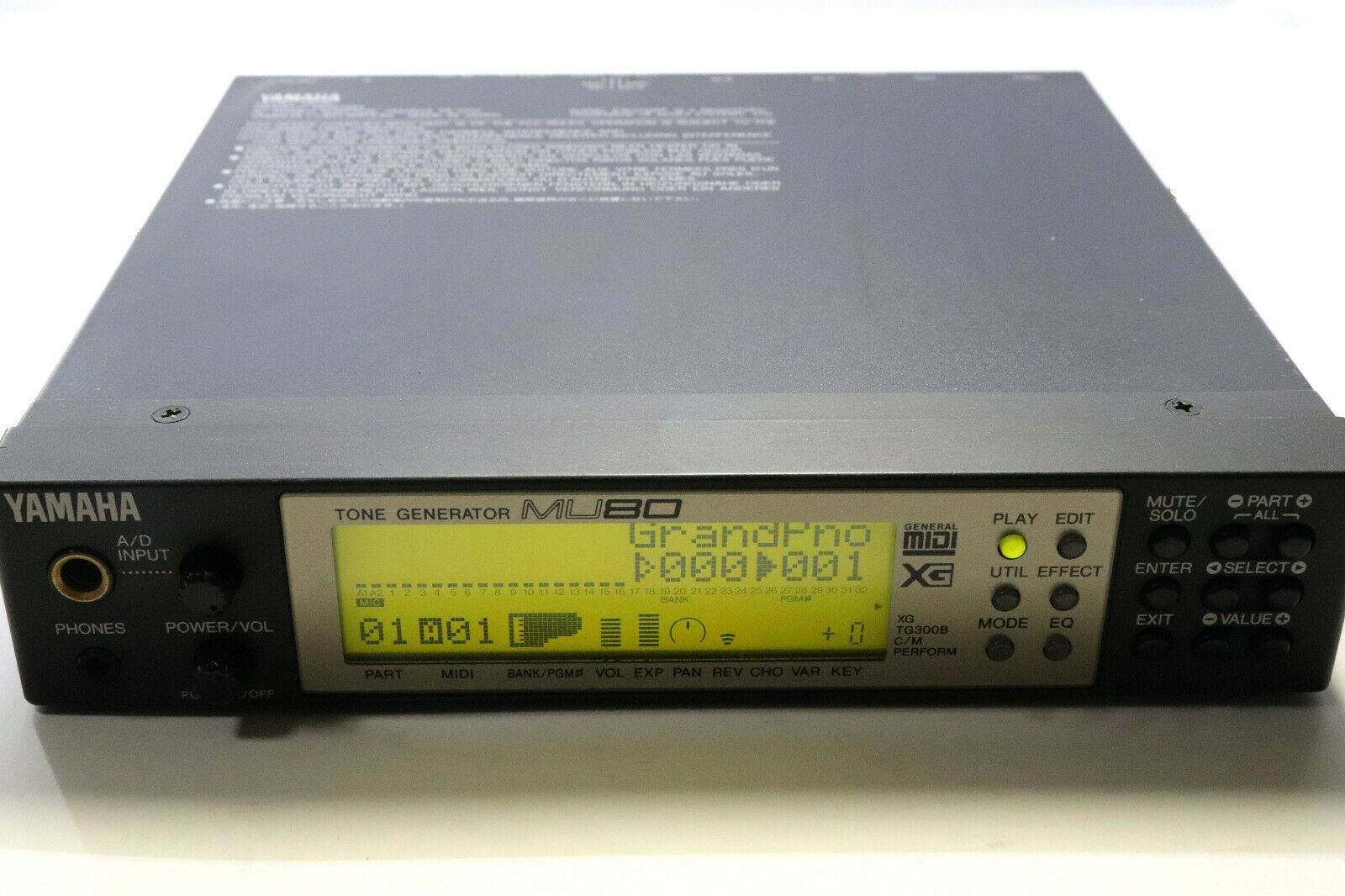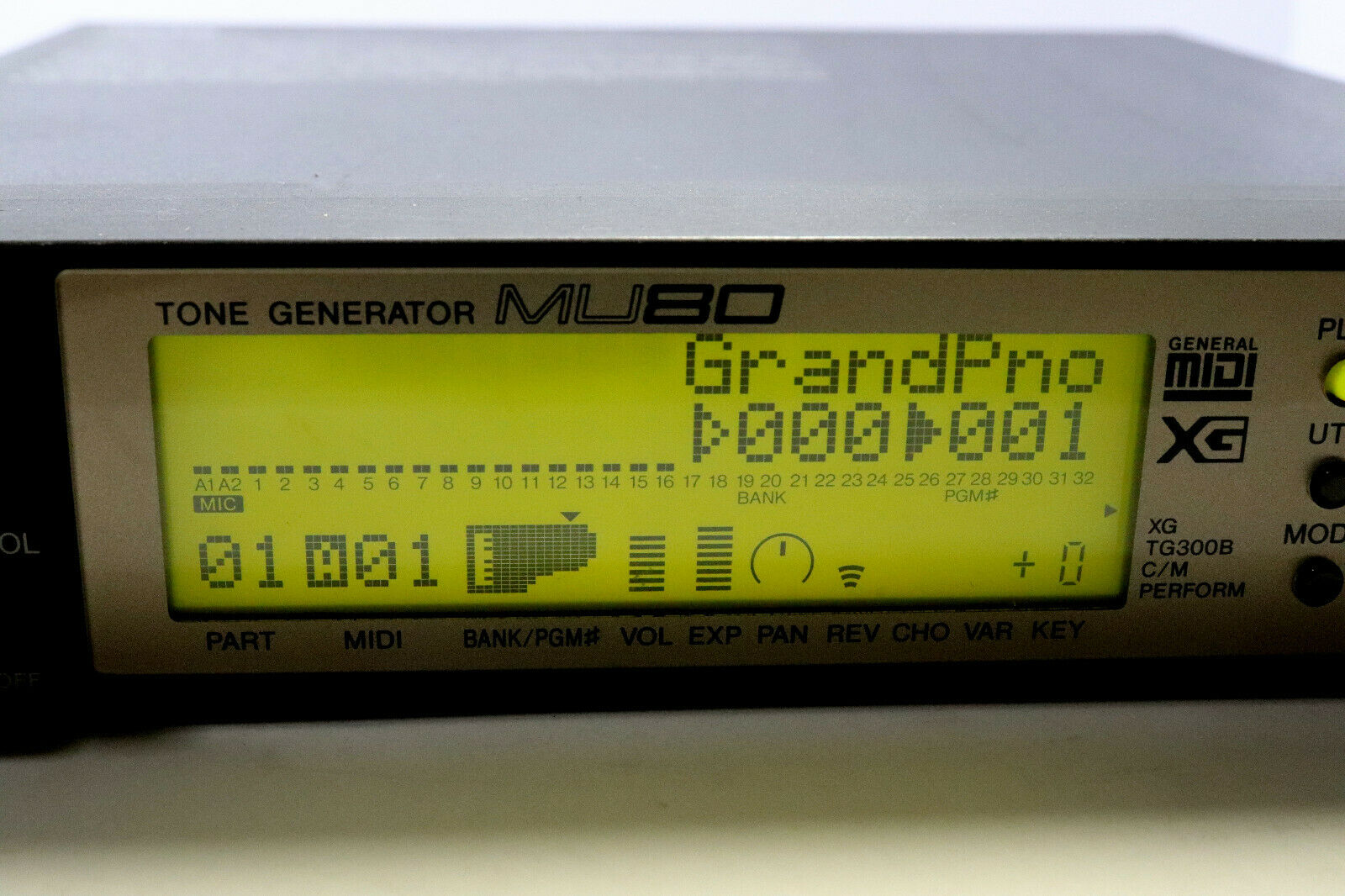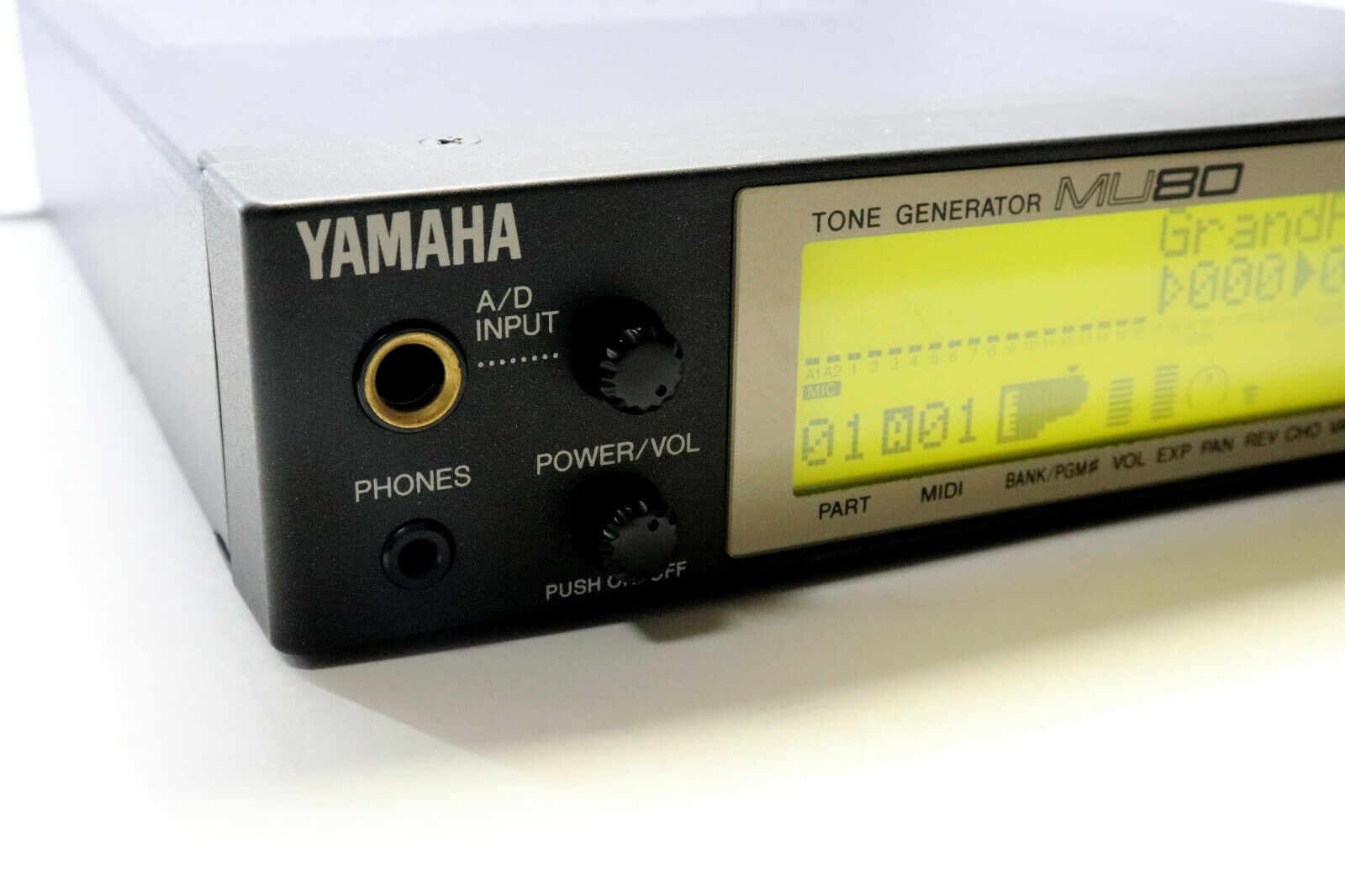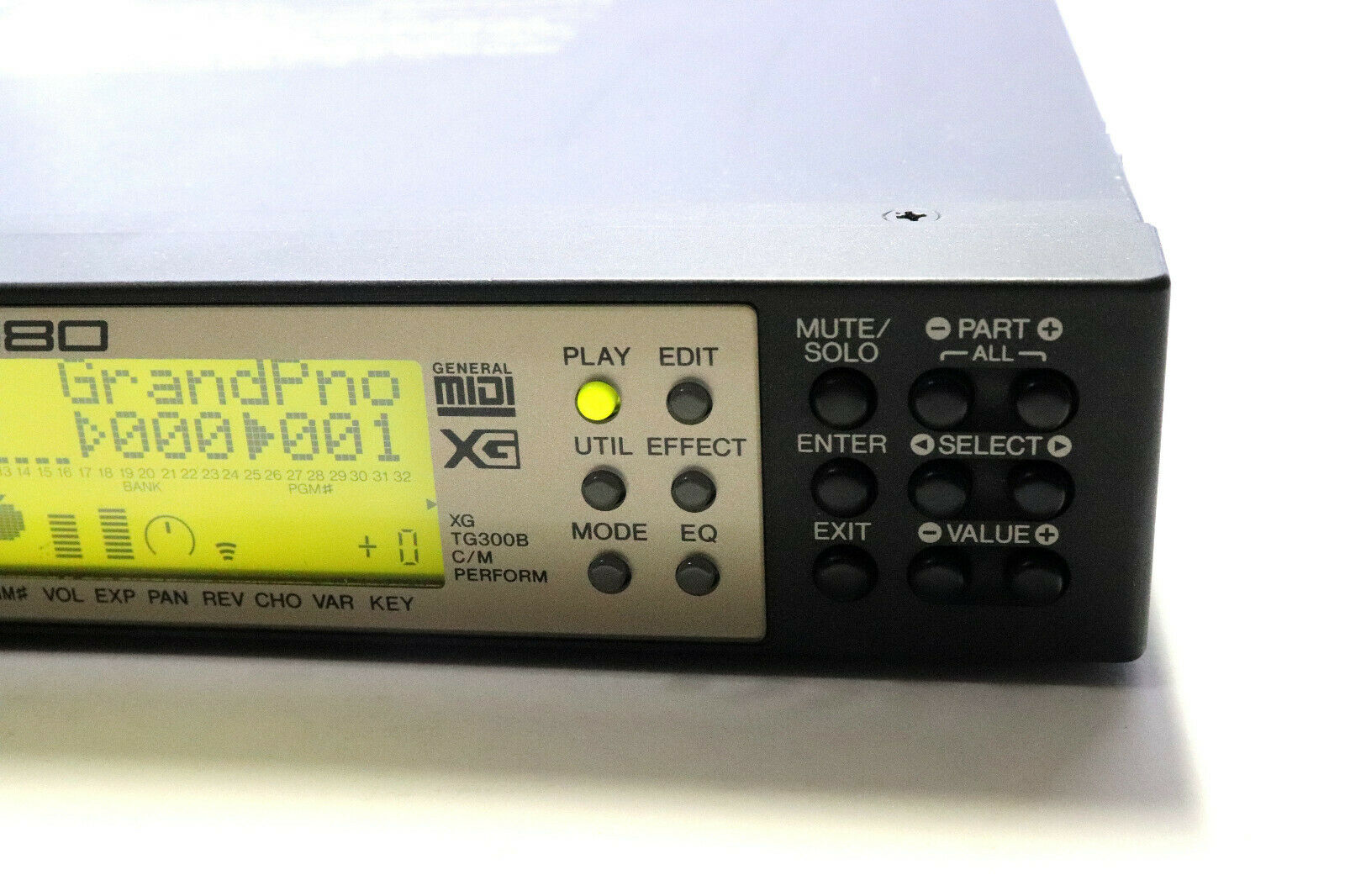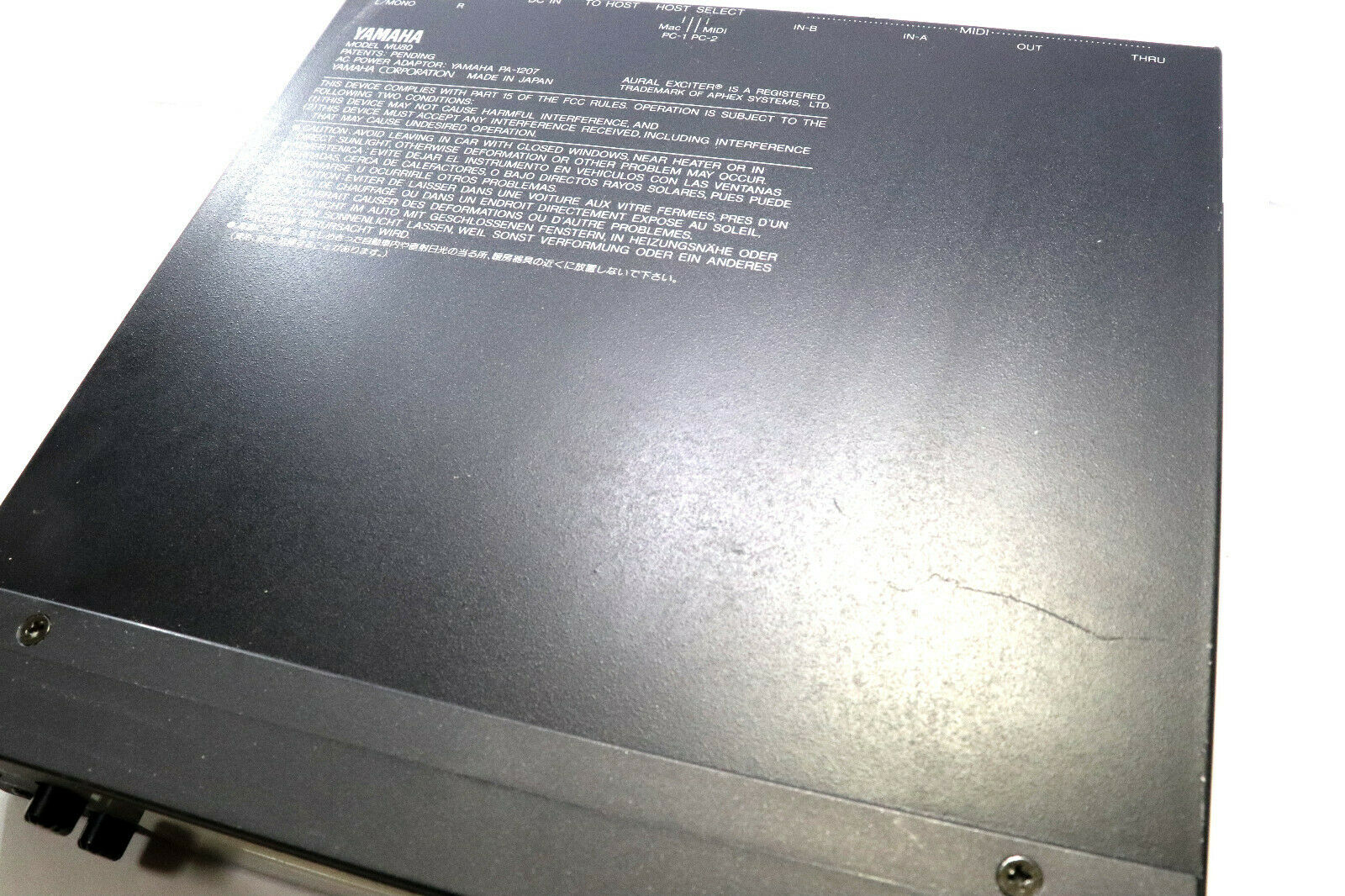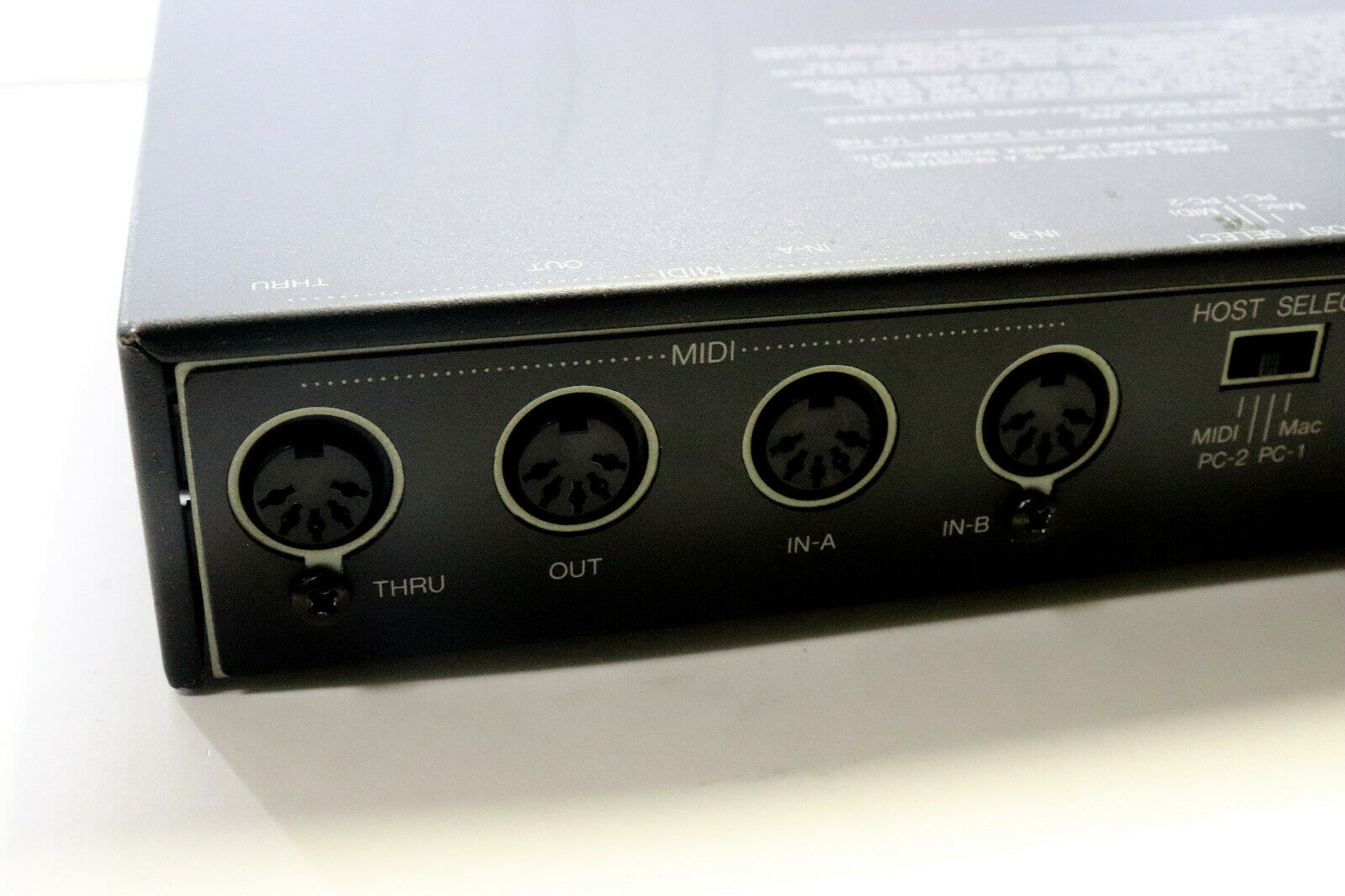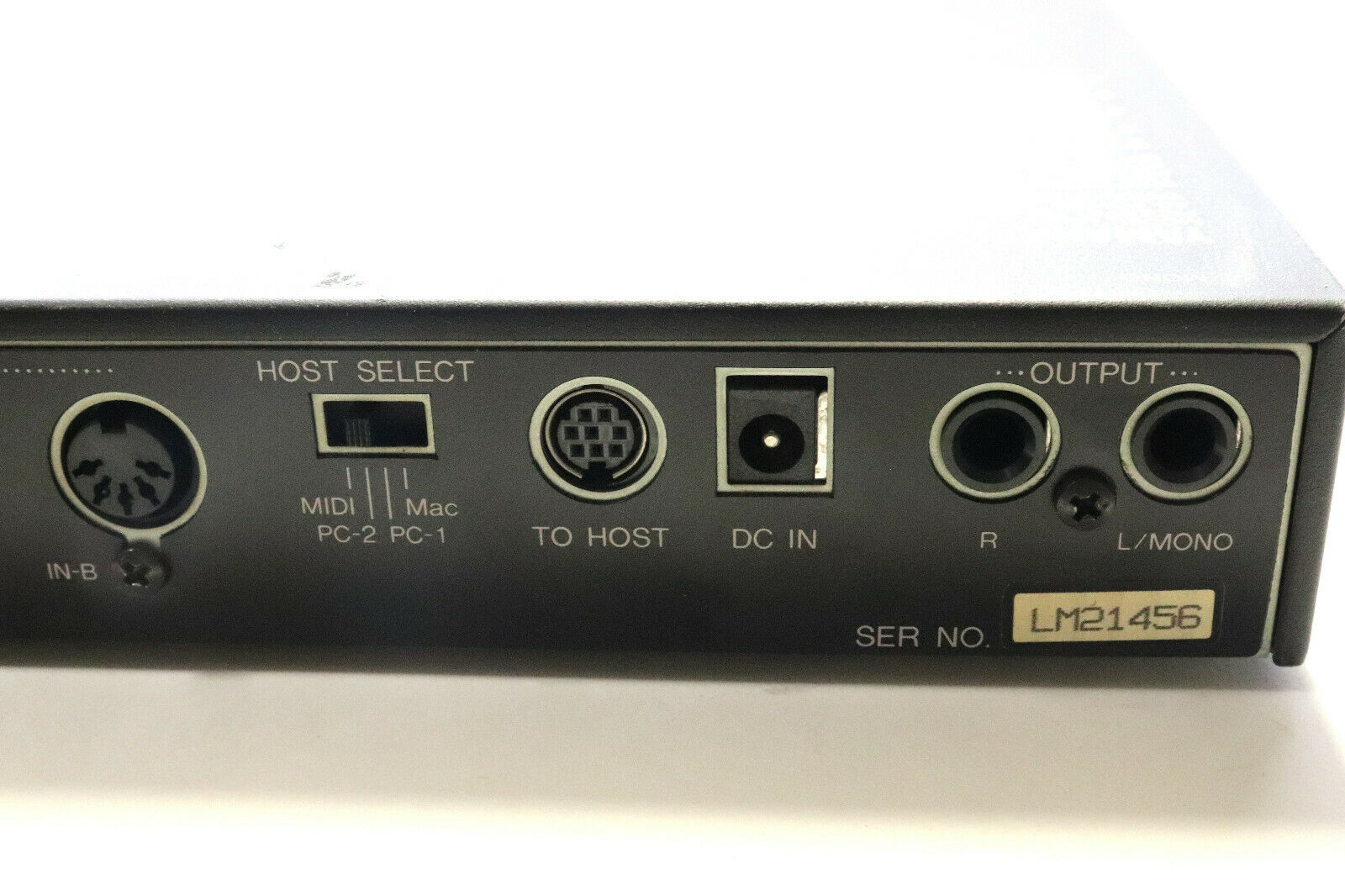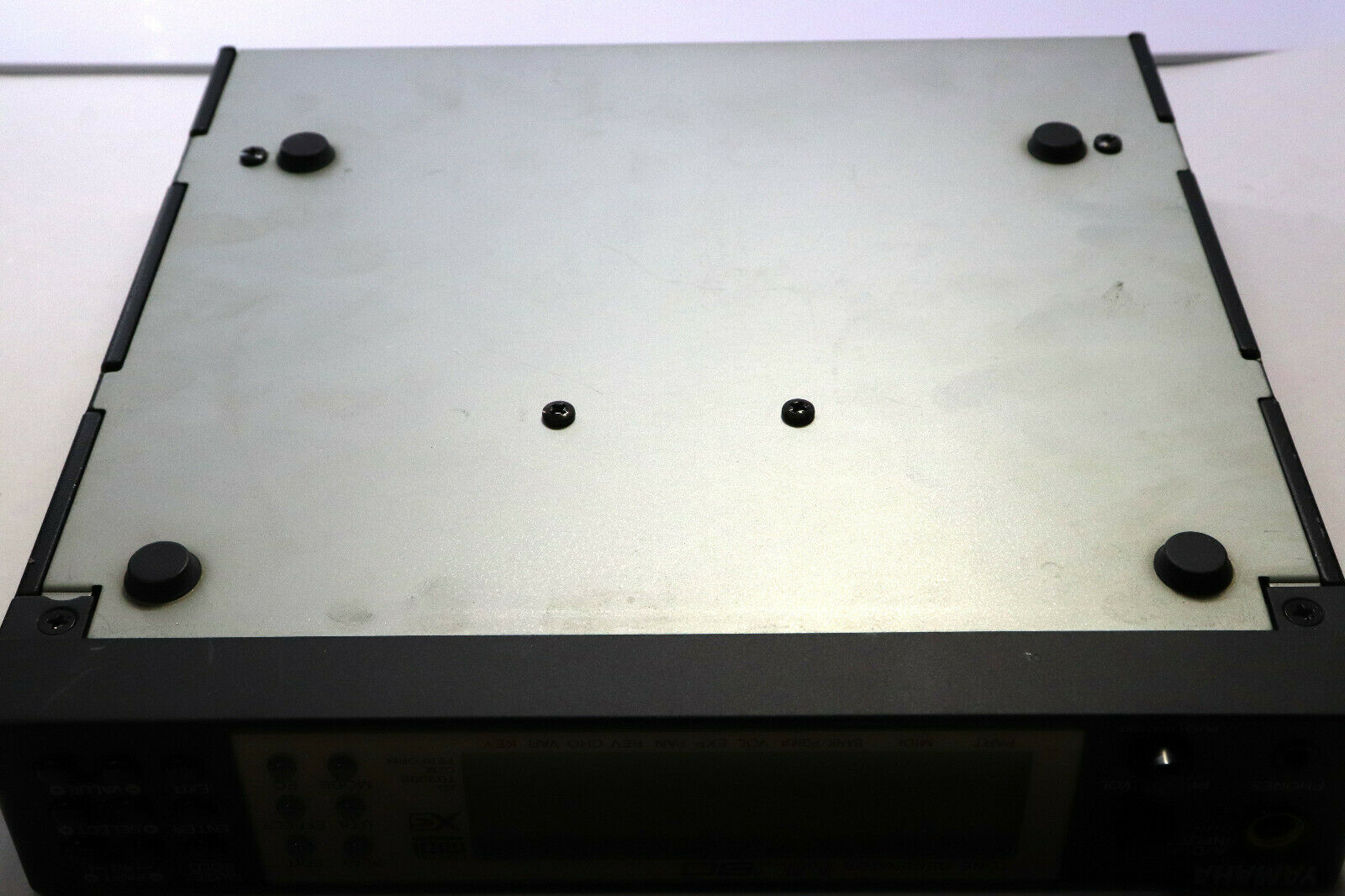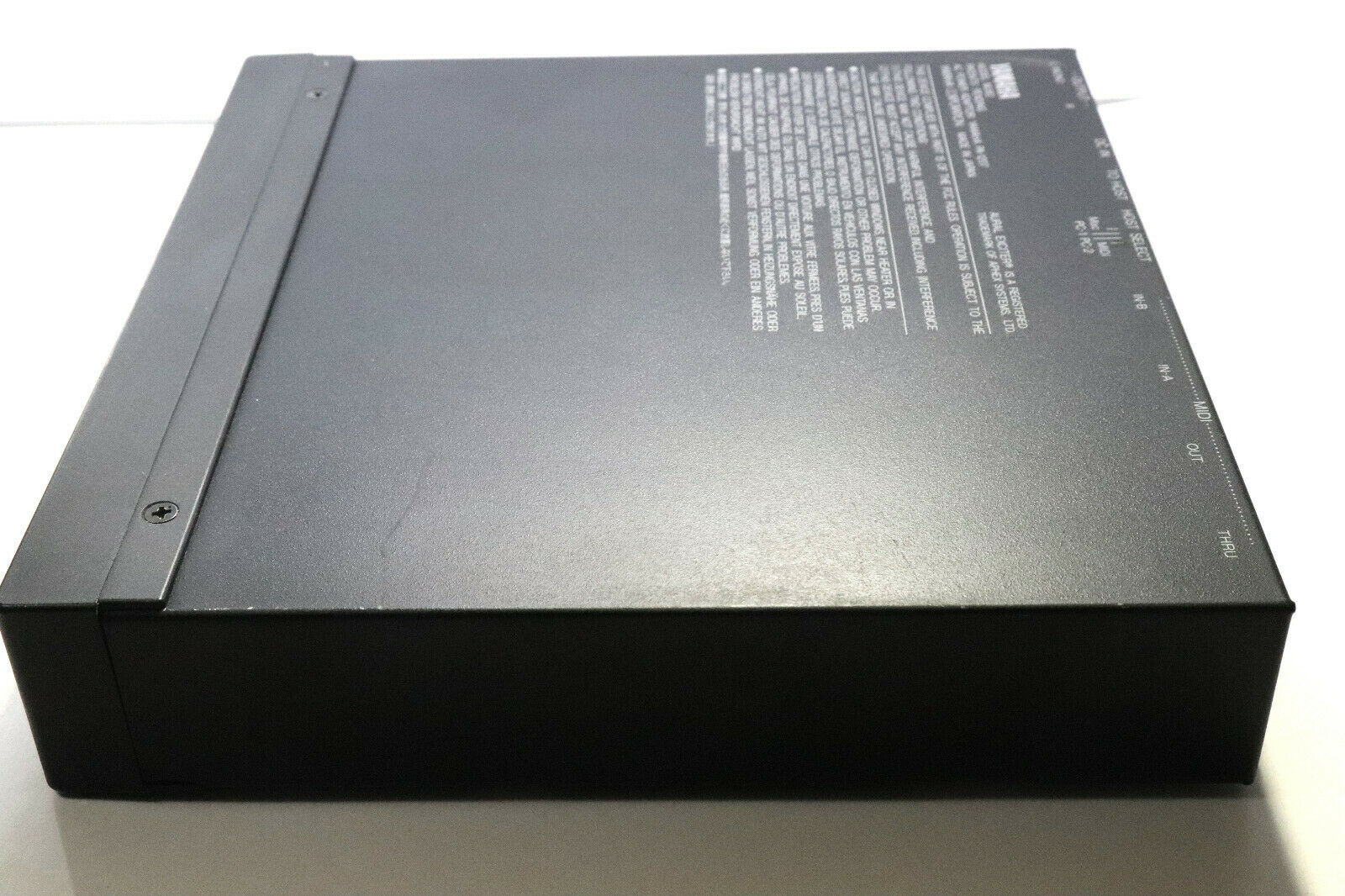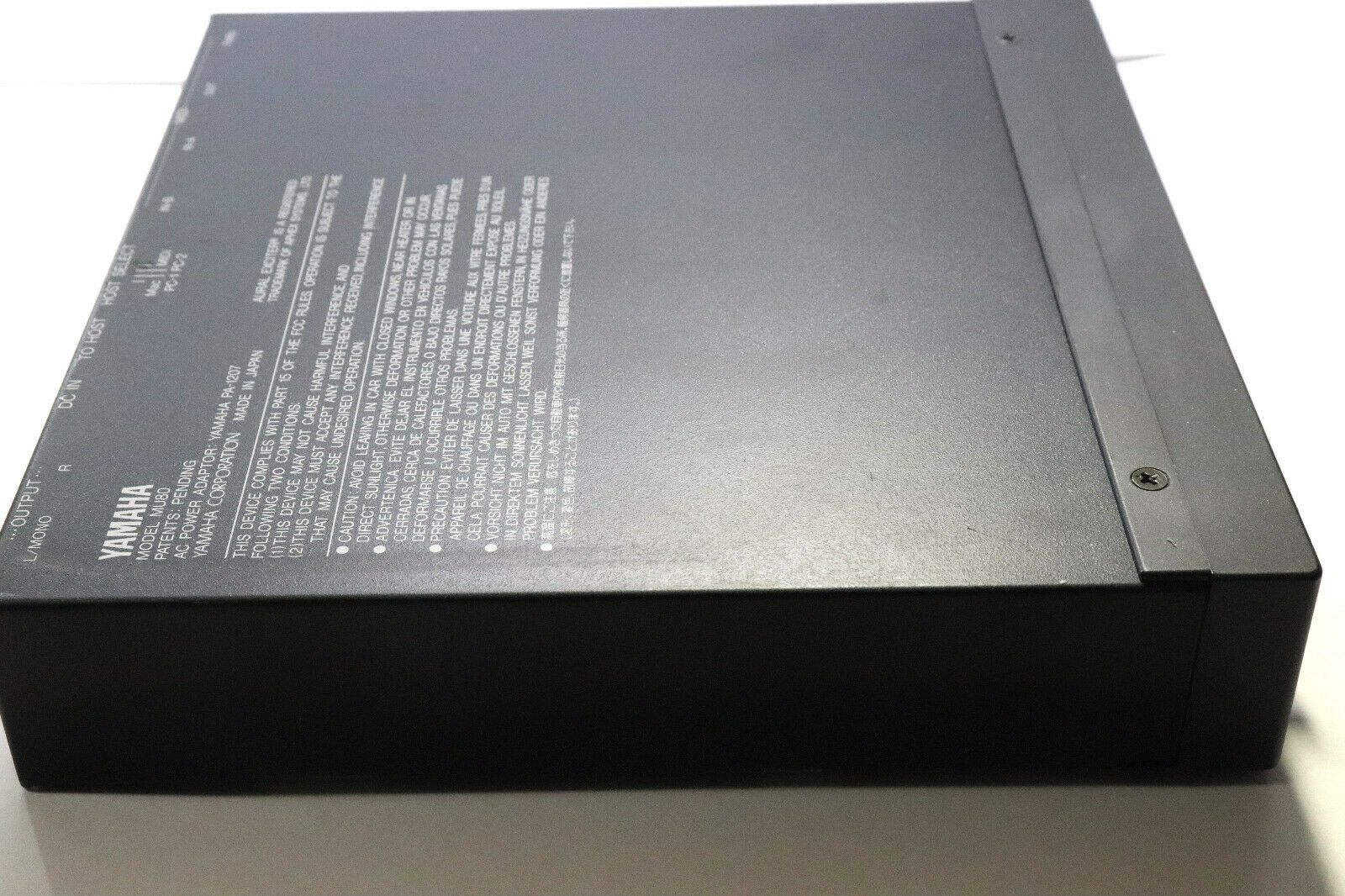 MIDI Sound on Your Vintage PC
MIDI Sound on Your Vintage PC
For 80s and 90s PC users, the cost of having good quality sound in games was high. With the arrival of the Roland MT-32 in 1987 you would have needed to drop almost $700 USD to get one. Since this was out of reach for most of us, we instead purchased a much cheaper sound card or in the early days we just put up with the PC speaker! My family bought a Sound Blaster-compatible card for our Amstrad PC2286 in 1992 - it was an Orchid Sound Producer, and it made the world of difference!
Moving forward to today, I cannot help thinking that I missed an important part of those DOS gaming days - experiencing the game with audio that the authors and musicians had originally intended.
What Makes it Better
Unless you're a musician you may not be fully aware of how much better a Roland MT-32 can be over, say, using an Ad Lib or Sound Blaster card. Or perhaps you know it's better, but you're not sure why. The answer is in how the card (or external box) produces its sounds.
An Ad Lib card is a very simple FM synthesis card. It produces 9 monaural channels which generate waveforms that differ in length and tone. Essentially, it attempts to produce audio output that sounds like a real instrument. By contrast, a Roland device contains "samples" of audio waveforms stored in memory. These can be played on one of its 8 channels or 1 rhythm channel to produce the sound. Because these samples are actual recordings of real instruments, the sound is much more real compared to the synthetically-generated sounds on, say, an Ad Lib or Sound Blaster.
Having this realistic sound in 1990 came at a price. An Ad Lib card would cost about $130 USD compared to a Roland MT-32 which initially retailed for $695. This put it out of reach of most amateur consumers, although Sierra Online made a deal with Roland to bundle their King's Quest game with a Roland for $500. These days, you can get into "sample-sound" DOS gaming for a more manageable price tag. So now, onto a bit of history.....
The Roland MT-32
 In 1987 Roland launched a music synthesizer box called the MT-32. This was before the "MIDI 1.0" standard which would arrive a year later, and way before the "General MIDI" standard.
In 1987 Roland launched a music synthesizer box called the MT-32. This was before the "MIDI 1.0" standard which would arrive a year later, and way before the "General MIDI" standard.
Its intended audience was for amateur musicians rather than computer users. The MT-32 came with a built-in library of 128 synth and 30 rhythm sounds, playable on 8 melody channels and 1 rhythm channel, plus it had a digital reverb effect. It actually could produce much better sounds than the stock library if you used a computer-based editor to create and upload your own sound samples. The better game soundtracks did just that, and used the full capability of the MT-32 to produce very realistic custom instruments and sound effects not found in its default samples. One thing lacking in the MT-32 was non-volatile storage so when power was switched off, any uploaded custom samples were lost. This meant games that required the use of custom samples would be required to upload them to the MT-32 as the game loaded.
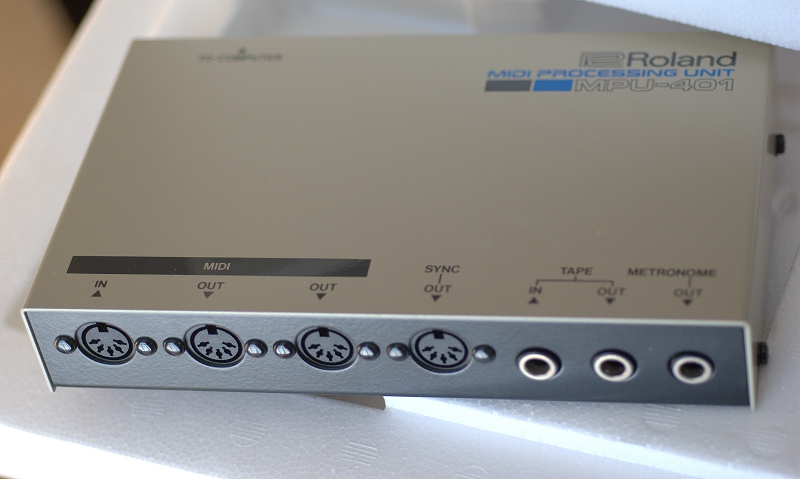 To connect the MT-32 to a PC required what Roland called an "MPU-401" (Midi Processing Unit-401), plus a suitable interface card installed in one of the PC's expansion slots. Roland made MPU interface cards and plug-in adapters for all the popular computers at the time, including the Apple II (MIF-APL), Commodore 64 (MIF-C64), IBM PC (MIF-IPC), MSX (MIF-MSX), and NEC PC-98 (MIF-PC8). So the connection from your MT-32 to the computer looked something like this:
To connect the MT-32 to a PC required what Roland called an "MPU-401" (Midi Processing Unit-401), plus a suitable interface card installed in one of the PC's expansion slots. Roland made MPU interface cards and plug-in adapters for all the popular computers at the time, including the Apple II (MIF-APL), Commodore 64 (MIF-C64), IBM PC (MIF-IPC), MSX (MIF-MSX), and NEC PC-98 (MIF-PC8). So the connection from your MT-32 to the computer looked something like this:
MT-32 -> MPU-401 unit -> MPU-401 interface card/adapter -> Computer
Later, Roland put most of the electronics in the MPU-401 onto the interface card, reducing the MPU-401 to being nothing more than a small 'breakout box' with just 3 DIN sockets (1 IN and 2 OUT) and three 3.5mm jack sockets (TAPE IN, TAPE OUT, and Metronome OUT) on the back.
The first of these new interface cards for the PC was called the MPU-IPC - an 8-bit ISA card with a 25-pin DB connector that went to the breakout box. This card was found to be incompatible with faster PCs so the MPU-IPC-A was born. Others models are known to exist, called MPU-IPC-B and MPU-IPC-T - these apparently have jumpers to allow you to select a different I/O address and IRQ. All of the above cards still require the separate MPU-401 breakout box to function. A word of warning about one Roland interface card - the S-MPU/AT, aka Super MPU. Strangely for a Roland product, this isn't 100% MPU-401 compatible - do some searching online for more details.
Roland eventually got rid of the MPU-401 breakout box in its entirety and put all the connectors on the back of the interface card itself. The IBM PC version of this card was called the MPU-401AT. It also included a connector for wavetable daughterboards.
So the connection then became: MT32 -> MPU-401 interface card -> PC
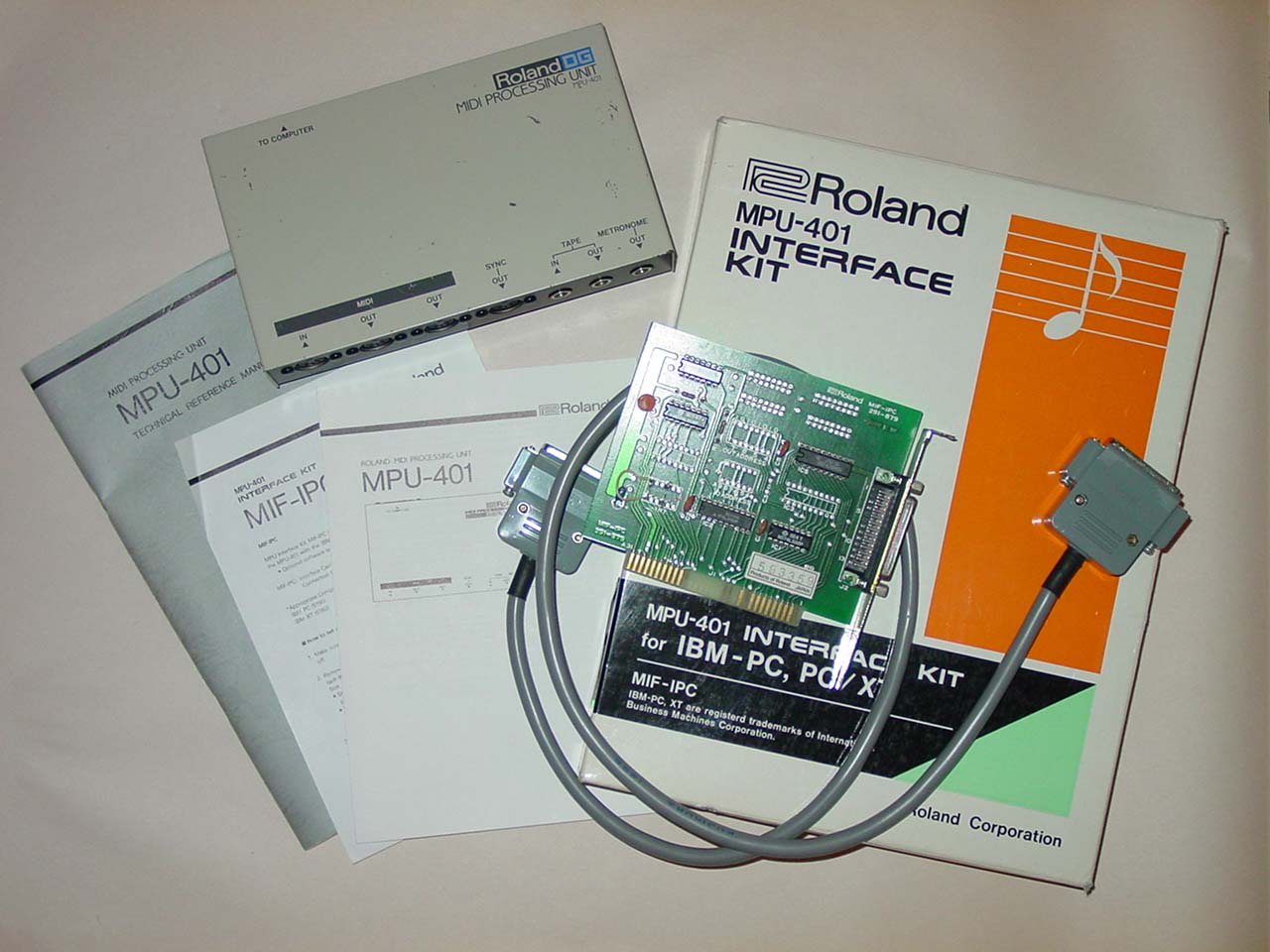
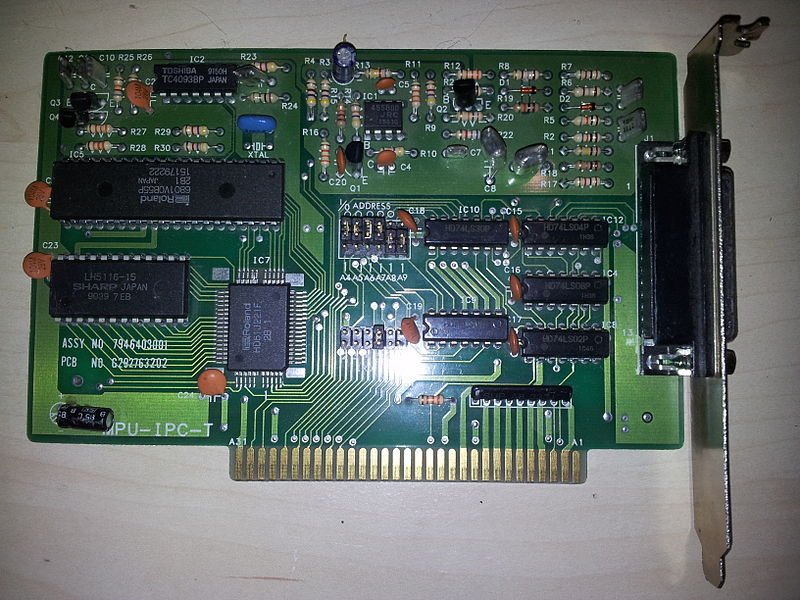
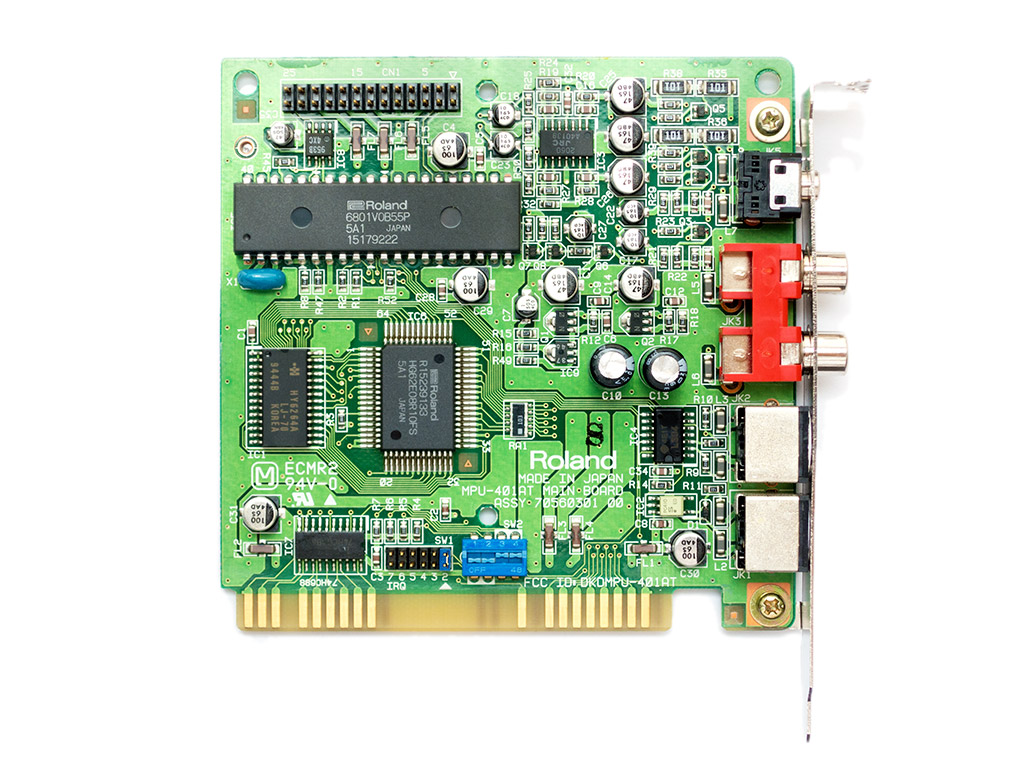
From left to right:
(1) The Original MPU-IPC card, connecting cable for the MPU-401, and manuals
(2) A later MPU-IPC card with more of the electronics from the MPU-401 on it
(3) An MPU-IPC-T card
(4) An MPU-401AT which no longer requires the MPU-401 breakout box at all
Due to the popularity of the Roland in PC gaming circles, competitors such as Creative Labs and Ensoniq began adding MPU-401-compatible interfaces to their higher-end cards. These typically used the 15-pin game port to double-up as a MIDI connector, but read on to find out why these aren't really a suitable replacement for the real MPU-401 interface!
Connecting It Up
These days you have a couple of choices when connecting an MT-32 to your retro PC. Incidentally, if you're connecting your MIDI device such as a Roland MT-32 to a modern Windows PC and using DOSBox, click here for instructions on how to set that up.
Normal Mode vs UART Mode
The MPU-401 ran in one of 2 modes: "Normal" mode (unofficially called "intelligent" mode),
and "UART" mode (unofficially called "dumb" mode).
Normal mode provides an 8-track sequencer, MIDI clock output, SYNC24 signal output, tape sync, and a metronome. Most early MT-32-supported games assumed the owner had a proper MPU-401 interface, and so only support Normal mode.
UART mode is the simpler of the two, and only offers 2-way MIDI
signal communication (data only, no MIDI commands). Later games ignored the need for MIDI commands and hence did not require Normal mode support, so UART mode is just fine for these.
1) Use the Game port on your MPU-401-compatible sound card. This will require a 15-pin to MIDI cable.
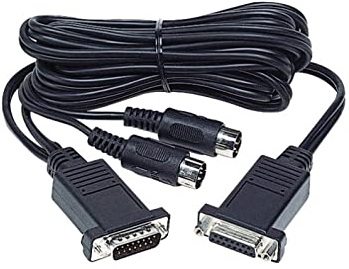
Connect the 15-pin male end of your cable to the 15-pin game port/MIDI socket on the sound card. Then connect the DIN connector marked "MIDI OUT" on the cable to the "MIDI IN" socket on the MT-32. A word of warning though... most sound cards do not support "Normal" mode (see note in the box to the right), which a lot of earlier games used, so they won't work properly with this method.
- or -
2) Buy a dedicated MPU-401 interface card. These are usually 8-bit ISA expansion cards, and have a 9-pin port on the back of the card that looks like a serial port. These require a special 9-pin to 2x (or 4x DIN) cable. Some cards support a single MIDI IN/OUT while others support double MIDI IN/OUT. The cable will either have two DIN plugs if it's a single, or four DIN plugs if it's a double. We only need a single for DOS gaming.
Compatible interface cards from back in the day known to support MPU-401 Normal mode are:
- Computer Music Supply CMS-401 (1988)
- Computer Music Supply CMS-444 (?)
- Midiman MM-401 (1991)
- Emagic LOG2PC (1991)
- Music Quest MQX-16 (1989)
- Music Quest MQX-32 (1988)
- Music Quest MQX-32M (1991)
- Music Quest PC MIDI Card II (1993)
- Voyetra V-4000 (1987)
- Voyetra V-4001 (1988)
- Voyetra OP-4001 (1987)
- Voyetra V-22 (1990) - with optional MPU-401 interface daughterboard
- Voyetra V-24 (1991)
There are no MPU-401 interface cards that are PCI - they're all either ISA or MCA (Micro Channel Architecture), so are only usable in vintage PCs.
Another alternative to getting your hands on an MPU-401 interface card is to build one yourself! Search the web for "HardMPU". A couple of modern cards now also exist - they are Serdaco's ISA MPU card, and the Orpheus sound card with PC MIDI option.
SoftMPU
There is also a software option called SoftMPU by Peter De Wachter and maintained by bjt and elianda on GitHub. SoftMPU is a DOS TSR that emulates an Intelligent mode MPU-401 interface, and works with many games.
Earlier DOS games that provide a Roland MT-32 sound option frequently use Normal mode during initialisation, or when communicating with the card. Most later games including those that support General MIDI typically only use the more basic UART mode. This mode is much simpler to implement, so almost all hardware that claims to be MPU-401 compatible will have this mode as standard. The Sound Blaster 16 and up only support MPU-401 UART mode, making them unsuitable as a reliable interface for older DOS games with MT-32 support. The older Sound Blasters do not support MPU-401 at all (the game port's pinouts are not MPU-401 compatible).
There are a few cards that try to fool games into thinking that an intelligent MPU-401 interface exists by sending an ACK (Acknowledged) byte in response to every command from the MPU-401. However, the actual command sent to the MPU-401 is not processed. Such cards are the Ensoniq Soundscape ISA series (including OPUS and VIVO 90), the Yamaha SW-20PC and the MediaTrix AudioTriX Pro. With about 97% of supported titles, these cards will happily work with intelligent mode games, so if you don't want to have the added hassle of connecting up an MPU-401 interface card, try to pick up one of these sound cards instead.
MT-32 Revisions
There were several revisions of the MT-32 during its production lifetime, some subtle and some less so. In a nutshell, they are:
MT-32 Rev. 0 (also referred to as the MT-32 "old")
Identifiable by checking the rear of the unit. If it doesn't have a headphone jack, it's an MT-32 "old".
These also came in two PCB (printed circuit board) versions. The version 0 PCBs were those fitted to MT-32s with serial numbers up to 851399 while version 1 PCBs were fitted to serial numbers from 851400 to 950499.
Version 0 PCBs had the main LA32 chip in a socketed PGA (pin grid array) package. These PCBs only accept control ROM v1.xx. All these PCBs also have v2.0.0 of the reverb ROM (16 KB in size).
Version 1 PCBs had the main LA32 chip in a 100-pin QFP package soldered onto the board. These PCBs only accept control ROM v2.xx. Some of these Version 1 PCBs also have the same v2.0.0 of the reverb ROM as in v0 PCB, whilst others have v3.0.0 of the reverb ROM which is 32 KB in size.
Ignoring the reverb ROM, the control ROM versions that exist are:
v1.0.3 - thought to be a prototype
v1.0.4 - dated 14th July 1987. Initial release.
v1.0.5 - dated 6th August 1987. Volume knob changes are now interpolated as opposed to directly applied to the data, allowing for much smoother volume changes when using the knob .
v1.0.6 - dated 31st August 1987. Rhythm selection Bender Control is now reset when a MIDI All Parameter Reset message is recieved, and when MT-32 Active Sensing is not received. Displays will not change, even when a Display Change exclusive MIDI message is recognized, unless the current mode is Master Volume input mode (the Power-up default mode).
v1.0.7 - dated 10th October 1987. Fixes a bug related to specific values in uninitialized SRAM on startup causing the unit to act bizarre.
v2.04 - dated 11th November 1988. Unknown (possibly the first 2.x MT-32 ROM. Contains changes boosting the level of the LA32 chip to de-necessitate the 14-bit hardware DAC-hack, and changes related to the demo mode expanded ROM, and the changed hookup of the volume knob, and possibly other changes related to the MT-32 2.x PCB)
v2.05 -
v2.06 -
v2.07 - dated 23rd May 1990.
Blue Ridge (for "old" MT-32 only) (1988) - also requires the battery-backed RAM hack, otherwise has no effect. Believed to be based on the v1.0.4 or v1.0.6 Control ROM.
You can determine which control ROM version is installed by pressing and holding buttons '4', 'Rhythm' and 'Master Volume' while switching the MT-32 on. The version number will be displayed on the front panel. Ultimately there is no material difference in the way any of these Rev. 0 boards sound.
MT-32 Rev. 1 (also referred to as MT-32 "new")
Identifiable by checking the rear of the unit. If it has a headphone jack, it's an MT-32 "new". The key differences between Rev. 0 and Rev. 1 are:
- Fixed problem that caused Exec. Checksum Error and Exec. Buffer Overflow messages - these were common when using a Rev. 0 MT-32 with a faster PC (above 486 era), since the speed the PC would send messages to the MT-32 was too fast for it to handle.
- Faster CPU (Intel P8098 replaces the Intel C8095).
- Demo mode - a larger ROM is fitted which contains some built-in songs.
- Lower noise.
- Subtle differences in what you see on the LCD display
- Volume dial reacts a little differently
All these got the version 1 PCB, and so will only accept ROM v2.xx (see further up for the different v2.xx ROMs).
Unfortunately, there are audible differences in a number of games that were designed to play on the original MT-32 (Rev. 0). When Roland designed the Rev. 1, they fixed several bugs that games programmers had deliberately exploited in Rev. 0 to make the game sound the way it did. These games are known to hang or crash when played back through a Rev. 1 MT-32. Furthermore, Rev. 1 was designed when the MIDI standard was starting to take shape, so Roland moved a number of the default sound samples around within the sound bank. The result of this is that when playing some games whose music was composed on the Rev. 0 MT-32, some [default] sound samples will seem out of place when played through a Rev. 1 MT-32.
I/O Addresses and IRQs
Nothing can escape the fact you still need to tell the PC where your card is and how to talk to it. The addresses that some of the Roland hardware use are listed below (red entries are the defaults):
SCC-1 and LAPC-I
IRQ: 2/9, 3, 4, 5, 6, 7
Port Address: 330, 332, 334, 336
MPU-IPC / MPU-401 (these are fixed/unchangeable on the early units)
IRQ: 2/9
Port Address: 330
MPU-IPC-T
IRQ: 2/9, 3, 4, 5, 6, 7
Port Address: 220, 230, 240, 250, 320, 330, 340, 350
MPU-401AT
IRQ: 2/9, 3, 4, 5, 6, 7
Port Address: 300, 320, 330, 332, 334, 336
Gaming up to 1992
It was common for PC games released from 1988 to 1992 to support the Roland MT-32. During this era, the MT-32 was followed by the MT-100 which was an MT-32 'new' combined with a Roland PR-100 sequencer. A little later, Roland introduced their "Computer Music" series: the CM-32L and CM-64, both released in 1989. The CM-32L was similar to the MT-32 but had an additional 33 effects which were used by some games. The CM-64 had a PCM synthesizer built-in which was not used in any games. These were followed in 1990 with the CM-300 (an SC-55 with no display or buttons and fewer ports) and CM-500 which was basically a CM-32L coupled with the new 317-sound Roland GS synthesizer which was compatible with the SC-55. The CM-500, whilst being a true Roland LA Synthesis device has been criticized due to its vibrato being noticeably harsher than the MT-32, MT-100, CM-32L, CM-64 and LAPC-I.
Roland also produced the LAPC-I, often incorrectly labelled LAPC-1, which was an entire CM-32L and MPU-401 interface on a single ISA expansion card - these are very rare and hence expensive to buy. You could also purchase the Roland MCB-1 "breakout box" to plug into the LAPC-I which expands the proprietary connector on the back of the card to provide a full complement of MIDI IN/OUT DIN connectors. This isn't needed for DOS gaming though. All these above models are *not* 'General MIDI' compliant.
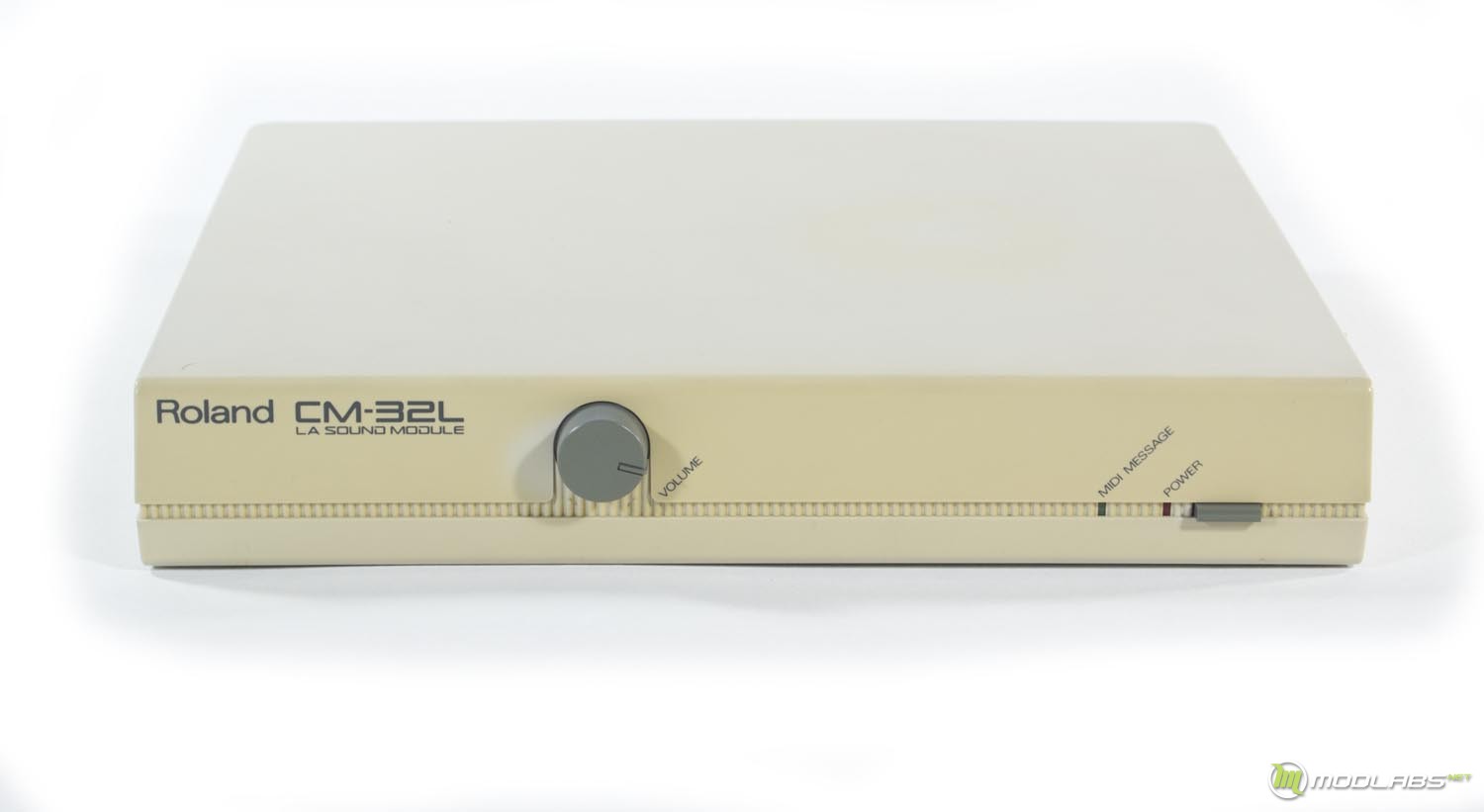

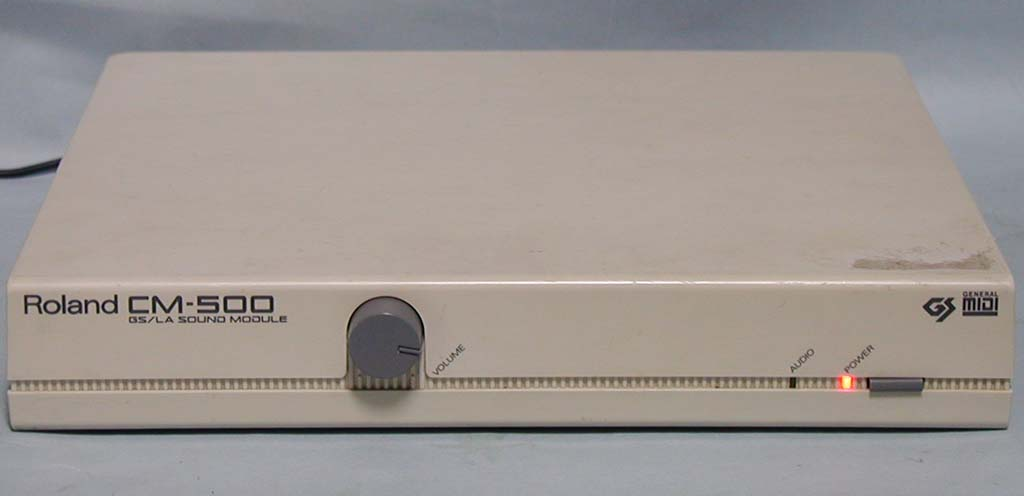
(From left to right) TOP: Roland MT-32, MT-100, LAPC-I
BOTTOM:
CM-32L, CM-64, and CM-500
PC Speed Issues for MT-32
If you have a Pentium III or faster CPU it is highly likely it will be sending MIDI data far too quickly to the MT-32 or compatible to cope. This will often cause the very common "Exec. Buffer Overflow" (first gen MT-32s only) and the "Exec. Checksum" error (all modules).
Typically you would not be playing MT-32 compatible games on such a fast computer anyway, as MT-32-compatible gaming really only went up to 1992 and the Pentium III arrived in 1999 ! If you are running a fast retro DOS gaming computer and want to include MT-32 compatibility, run these games with your external (and possibly internal) cache disabled, or run them in DOSBox (yes, you can get DOSBox to work with your actual Roland hardware!).
Gaming after 1991 - Enter the Roland Sound Canvas
Around 1991, the General MIDI standard came into being. The first Roland to support this was their new "Sound Canvas" SC-55. These models could be put into "MT-32" mode, whereby it could use the default 128 MT-32 instruments and an MT-32 plus CM-32L percussion set. In all, the SC-55's patch set is about 3 MB in size, of which it is estimated the MT-32 compatibility accounts for 1 MB of this. As mentioned earlier, the vast majority of games that supported the MT-32 directly tended to patch (write) custom samples over the top of the existing samples, and the SC-55's "MT-32" mode cannot be patched. Therefore the SC-55 is a fairly poor substitute for DOS gaming where MT-32 sound is paramount - it will probably just sound "wrong".
With the SC-55, Roland introduced their "GS", or "General Standard", which extended the General MIDI specification by adding 98 more instruments, 15 percussion, 8 drum kits and 3 effects. The idea behind GS was that General MIDI (GM) was a bit too restrictive, and there was room to build on it whilst retaining backward compatibility with the core standard. Upon introduction in 1991, many PC game developers adopted the SC-55 as the de-facto standard for their top-end game music.
The SC-55 Mk II, launched two years later, was a minor upgrade with increased polyphony (28 voices over 24) and more patches giving a total of 354 instruments. It also got 18-bit audio in place of 16-bit. Because the original SC-55 was released just before the General MIDI (GM) standard was finalised, with the Mk II Roland remapped a couple of instruments to make it fully GM-compliant. This means that in a few games the later SC-55 Mk II sounds a little different to the Mk I. Aside from a few differences, any SC-55 is considered a must-have for a 90's DOS gamer.
Roland also released the SC-55 on an ISA card called the SCC-1. This is much shorter than the earlier MT-32-based LAPC-I so should fit in most PCs with a free ISA slot.
The SC-88 (and SC-88 Pro) was a later, more enhanced version of the SC-55, and can be put into an "SC-55 mode" to emulate the original. These days the cost of an SC-88 is a little higher than an SC-55, and the Pro even more so. In terms of suitability for DOS games with MIDI playback, an SC-88 in SC-55 mode sounds slightly different to a true SC-55. The SC-88 Pro offers no material gains over the SC-88 [for gaming], since by the time the Pro was launched most game music and effects had moved away from General MIDI and towards CD audio.
There were also models such as SC-7 and SC-50 which didn't have "MT-32" mode. The SC-50 also lost the front MIDI in port. As mentioned, this is no real loss from a DOS gaming perspective, so if you can find an SC-7 or SC-50 going cheap, get it.
Finally, the Roland SCD-15 is an SC-55 MkII on a "waveblaster" add-on card. This must be connected to a waveblaster (or wavetable) connector on your sound card, such as the Sound Blaster 16, or the MPU-401AT card.
So in a nutshell, all of the above SC range should not be relied upon for MT-32-compatible DOS games, but for General MIDI-supported games any of them will be a great addition to your hardware setup.
SC-55 Mk. 1 or Mk. 2
The original Roland SC-55 (now refered to as the Mk. 1), and the first to bear the new "Sound Canvas" title, had only the "GS" logo on the front at the bottom right of the display (no "General MIDI" logo). Another variant has a "GS Standard" logo in the same location - it is not known which came first - the ones with GS or the GS Standard logo. The last of the Mk. 1s got a combined "GS" and "General MIDI" logo placed at the bottom of the shiny black vertical strip that the "All" and "Mute" buttons resided on. All these variants of the Mk. 1 were released with a variety of Control ROM versions, as follows:
v1.00 - Unknown Date. Not fully GM-compliant. This version didn't handle a GM reset properly (it did a GS reset only).
v1.10 - 23rd May 1991 - has code 110110117. Control ROM chip has R15209275 9126D stamp. IC30 is R15199736. Some of these have the control ROM soldered in. Has Fl.Key Click on Instrument #122. These early modules also lack a sine wave variation tone on instrument #82.
v1.20 - 4th Jun 1991 - has code 120120118. New instrument table - now has Breath Noise on Instrument #122 instead of Fl.Key Click. This is the 2nd-most recommended version for the best DOS game compatibility.
V1.21 - 8th Oct 1991 - has code 121120118. Control ROM chip has R15209363 9152D stamp. IC30 is R15199778. This is the version most recommended for the best DOS game compatibility.
v2.00 -
Unknown Date - has RPN bug fix.
Those with a control ROM of v1.00 or v1.10 also have a different CPU to those with v1.20 and higher.
The SC-55 Mk. 2 was a minor upgrade on the Mk. 1. It supported 4 more voices simultaneously (28 instead of 24) and its output was at 18-bits rather than 16. It came with extra instruments which are not part of the General MIDI standard, though it lost the Capital Tone Fallback (CTF) support, which is used (accidentally) in a small selection of games - it would just play instrument #129 instead (Silence).
It is known to have been released with the following Control ROM versions:
v1.00 - ?
v1.01 - ?
Alternatives
There were also a number of other General MIDI sound modules from Yamaha and Ensoniq. These are mostly excellent alternatives to the Roland series, since they all fully support the General MIDI standard. From Yamaha, there is the MU series which on top of GM also support Yamaha's XG (eXtended General [MIDI]) which increases the total instruments to over 600. The MU80 was their first to support XG, followed by MU50 a year later (a cut-down MU80), and MU10 after that which was a cut-down version again with no LCD display. For internal cards, the DB50XG is a daughterboard that plugs into the "WaveBlaster" (wavetable) connector on your Sound Blaster card. The DB50XG is basically identical to the Yamaha MU50 in sound. A standalone ISA card version of the DB50XG was also released, called the SW60XG.
Korg also produced several MIDI modules including the NS5R and NX5R. Both are almost identical aside from the NS5R being white and the NX5R being black, but the NX5R comes with a Yamaha DB50XG wavetable daughterboard fitted to its internal WaveBlaster header. The NS5R came with an empty WaveBlaster header (the DB50XG could be bought as an optional extra). The built-in Korg samples in general are considered inferior to both Roland and Yamaha devices, and the audio output is more noisy.
Since the General MIDI standard only dictated which instruments were stored, and not specifically how each instrument sounded, different manufacturers recorded their own samples of these instruments - this makes them sound a little bit different from each other. Because of this, I highly recommended you listen to some samples from all of these devices to gauge which sound you prefer. Some say the Yamaha's electronic/synth sounds are stronger; others prefer the more classical Roland stringed instruments. Drums on all are equally good.
It is widely acknowledged that a lot of games developers wrote their musical pieces according to Roland's SC-series instruments (it was the de facto standard at the time), and so some concede that these are the best to buy in order to be as "authentic" as possible to what the composer intended. Having said that, it is generally accepted that games like Descent are far better played on a Yamaha MU80 than anything else!
I would like to add a little note though.. while I am giving a fanfare here for the Roland and Yamaha units, there is still a place for good old FM sound. Some games still sound incredible with the simple, pure output of an OPL3 or OPL4 chip - one example of this is 4D Sports Boxing, whose title music and hall of fame music are still simply gorgeous.
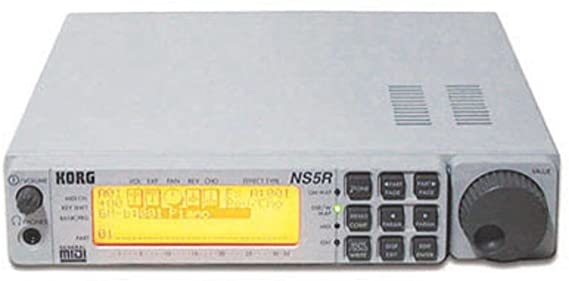
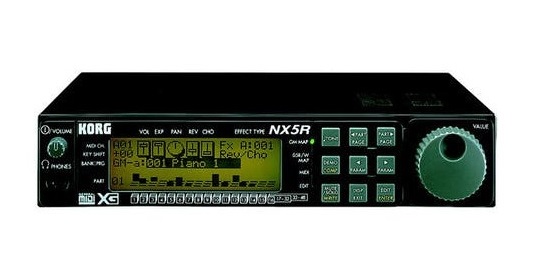
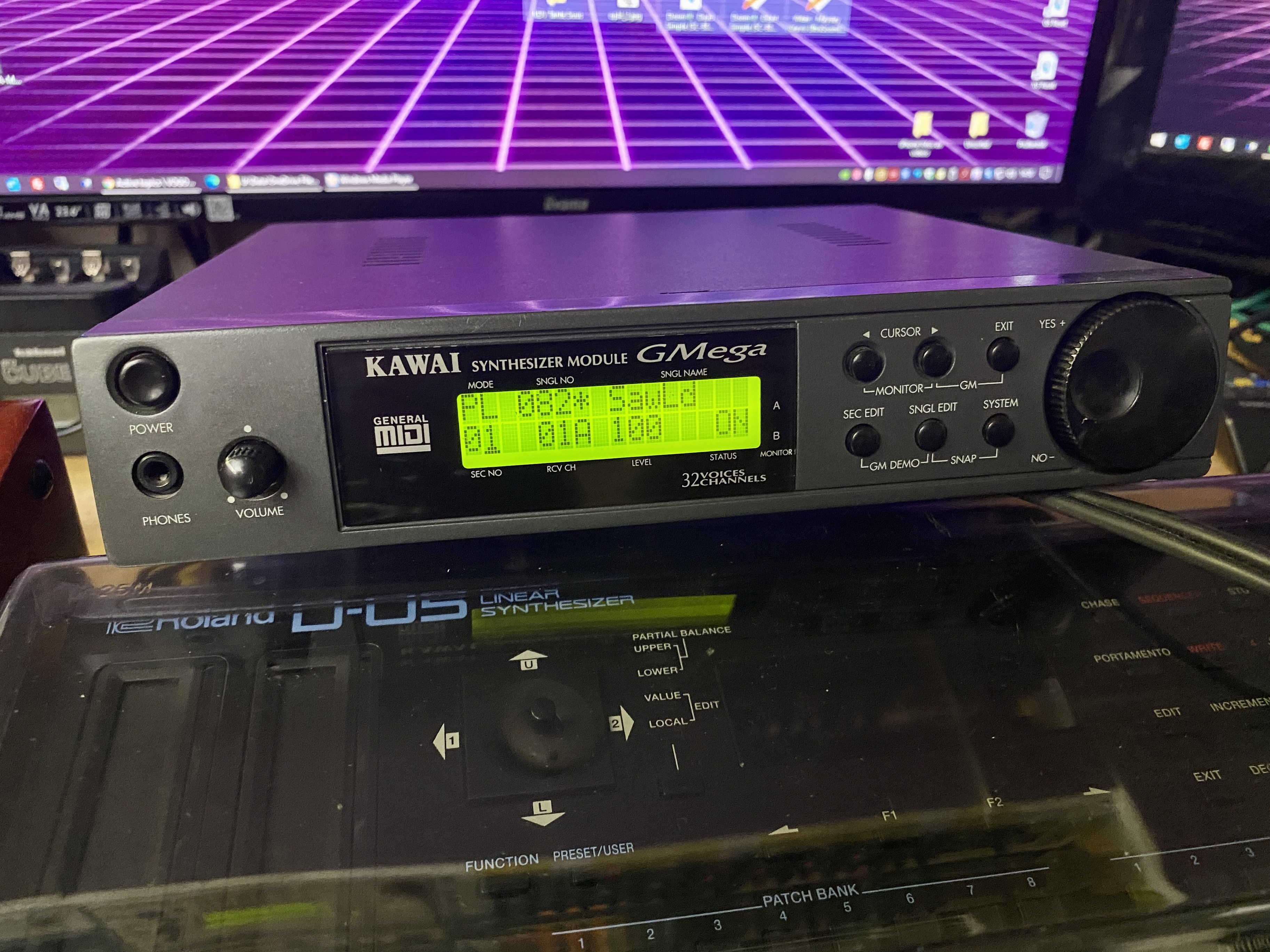
(From left to right) TOP: Yamaha MU50, MU80, MU90
MIDDLE: Yamaha SW60XG, DB50XG, MU10
BOTTOM: Korg NS5R, NX5R and Kawai GMega
DOS Gaming in 2017 - Should I Buy an MT-32 or SC-55 ?
Flash forward to today, and if you've read this far down I assume you are looking to add sampled-sound capability to your PC for DOS gaming purposes. So which one is the "right" one?
The answer of course is, it depends. It would be great if you could just buy the latest model of X which would be fully backward-compatible with all previous versions and support all games. Unfortunately that's not the case here. The MT-32 and General MIDI devices are not compatible with each other. They cover different periods of DOS gaming.
If you want to hear sampled sound across the entire DOS era (around 1987 through to 1995), my recommendation is to purchase an MT-32 for pre-1992 games, and a Roland SC (any model) for post-1992 games. Don't forget to add the sundry items to your shopping list - cables, interface cards, etc. If you only want one unit or can only afford one unit, determine whether most of the games you want to play are pre-1992 - if so, buy a Roland CM-32L or similar. If most of the games are 1992 or later, get an SC-55 or SC-88.
If you are playing DOS games via DOSBox, there are SVN builds of DOSBox with built-in Roland MT-32 emulation. There is also the Munt MT-32 emulator - you will need to also get the two Roland ROMs on file for these to work. For General MIDI, Windows has a built-in wavetable synth but its samples are considered to be very poor quality. An alternative to improve these is a tool called BASSMIDI, along with a soundfont (patchset) of your choosing.
A Shortlist of Supported Games
The list below is not exhaustive, just a sampling of my favourite games and what audio they support.
MT-32 Only Comanche 2 General MIDI Only Big Red Adventure, The |
MT-32 and GM Beneath a Steel Sky |
Games That Have Issues
Certain games proved less compatible on some hardware more than others. Here are some notes gathered from web searches:-
1) Wing Commander and Gateway were two games that are renowned for being tricky to get working with MT-32 sound.
2) Wing Commander - The Music Quest PC MIDI II interface card does support "Normal" mode, but on ROM version 004, Wing Commander crashes near the intro fireworks. Sometimes even before the Origin FX logo. Rom version 010 on this card works fine.
3) Wing Commander / almost all Sierra games - were designed to run on the MT-32 'old', so will sound odd when played on an MT-32 'new'.
4) Lure of the Temptress - will always trigger a buffer overflow, no matter how slow your machine.
5) Sierra games - There is a patch to get Sierra games working if you are connecting a Sound Blaster AWE32 to your MT-32. See Downloads.
6) Silpheed - is known to have problems with non-Roland MPU interfaces.
7) Be sure to use IRQ 2 and Port 330h unless you have no other option - some games don't like it when you move away from these defaults.
8)
Monkey Island 2 (non-ScummVM version) - has great MT-32 music, but doesn't support MT-32 and playing sound effects via Ad Lib or SoundBlaster, so lots of sound effects are missing. There is a patch for this in Downloads.
9) Betrayal at Krondor - is supposed to be heard through an SC-55. PCM sound effects won't play in Krondor floppy and CD versions if you have GM selected. There is a patch for this in Downloads.
10) Space Quest 5 / 6 - General MIDI doesn't sound very good, as Sierra simply remapped the instruments from MT to GM.
11) Sierra - The custom sounds for Sierra games are not located in the driver, e.g. mt32.drv, but rather in Patch files within the game resource files (resource.001, etc.). The MT-32 patch file will always be named patch.001.
12) Sierra - The earliest Sierra SCI games, which were released before the Roland SC models that had a PCM module built-in, don't sound right. This is caused by the mt32.drv driver file not supporting the PCM part. To resolve this, you can grab an mt32.drv file from a later SCI game and overwrite your older game's mt32.drv file with it. Open the new .drv file for editing, and you should see the following on the top line (which shows support for later models): "Roland MT-32, MT-100, LAPC-1, CM-32L, or CM-64". If it has this instead of just "Roland MT-32 Sound Module" or "Roland MT-32 or MT-100 Sound Module", overwrite your older one with this and retry the game. It should then sound a lot better.
Prices
Typical Roland MT/CM Prices (£ GBP) as of November 2017:
Roland MT-32 = £150
Roland MT-100 = £140
Roland CM-32L = £300
Roland CM-64 = £200
Roland CM-300 = £120
Typical MIDI Processor Prices as of November 2017:
Roland Sound Canvas SC-55 = £180
Roland Sound Canvas SC-55 Mk II = £120
Roland Sound Canvas SC-88 = £110
Roland Sound Canvas SC-88 VL = £120
Roland Sound Canvas SC-88 Pro = £160
Yamaha MU50 - £65
Yamaha MU80 - £140
Yamaha MU90 - £150
Yamaha MU90B - £130
Yamaha MU100B - £150
Typical MIDI Processor Prices as of February 2021:
Roland Sound Canvas SC-55 = £141
Roland Sound Canvas SC-55 Mk II = £156
Roland Sound Canvas SC-88 = £142
Roland Sound Canvas SC-88 VL = £139
Roland Sound Canvas SC-88 Pro = £176
Roland Sound Canvas SC-88ST Pro = £93
Yamaha MU50 = £103
Yamaha MU80 = £110
Yamaha MU90 = £127
Yamaha MU100B = £172
What I Bought
When I embarked on this project in November 2017 to add sampled sound to my retro setup, I was keen to get a hardware solution that spanned the entire DOS era. Ideally I wanted to not use my sound card's MIDI port due to the fact that many early games require MPU-401 "normal" mode.
My shopping list therefore looked like this:-
1) A Roland MT-32 for the pre-1992 games.
2) An MPU-401 interface card for the MT-32 to connect to.
3) A General MIDI
module for post-1992 games.
3) MIDI Cables.
Roland MT-100
There were no MT-32s for sale when I looked, but I did find a UK model MT-100 on Ebay that had a faulty Quick-Disc floppy drive for the built-in sequencer, so was highlighted as "spares or repair" - I reckoned the faulty disk drive would have no impact on the unit's MIDI capability, so I bid for it at the starting bid of £49.99 and won the auction. Delivery within the UK was £18.00. It came with the original PSU, user manual, 10 "Quick Disks", and the seller was kind enough to throw in three MIDI cables for me! I was the only bidder, so I managed to tick off the first item on my shopping list item for £68! Here's what it looks like:-
Roland MPU-401 Interface card
I soon discovered MPU-401 interface cards are now extremely rare. When I looked, there was a Voyetra V-24sm ISA card with 2 bids already up at $104.50 (about £78.25). Shipping from Texas to the UK was looking to cost a further $58 (about £44). This was way beyond what I was prepared to spend on the interface, so I waited. Another auction began on the only other MPU-401 interface card on Ebay at the time, but this too escalated to money I really couldn't justify ($120.50).
I decided to keep looking, but in the mean time I tried out SoftMPU which is a DOS TSR (Terminate and Stay Resident program) that emulates an MPU-401 interface in software, and runs in "normal" (aka "intelligent") mode. This allows about 30% of games to work correctly even though you're connecting an MT-32 or MT-100 to your sound card's MIDI/Game port that only supports "UART" mode.
I also noticed this online being sold by a music shop in Bristol (UK)...
- they were getting rid of a load of clearance items, and this was one of them - a BNIB (Brand New In Box) Midiman WinMan 2x2 ISA MIDI card. It's not MPU-401-compatible, but for £10 (plus £3 P&P) it was worth snapping up in case I wanted to play Windows 95/98 games with my MIDI module when it arrived.
GENERAL MIDI MODULE
For the later DOS era, I needed a module that supported General MIDI. There weren't many Roland SC-50 or SC-55 models on Ebay when at the time, but several SC-88 models being sold from Japan. I decided to purchase this one which was a lower price and better condition than some of the others I saw:
Roland Sound Canvas SC-88 MIDI Sound Module SYNTHESIZER From JAPAN!!!
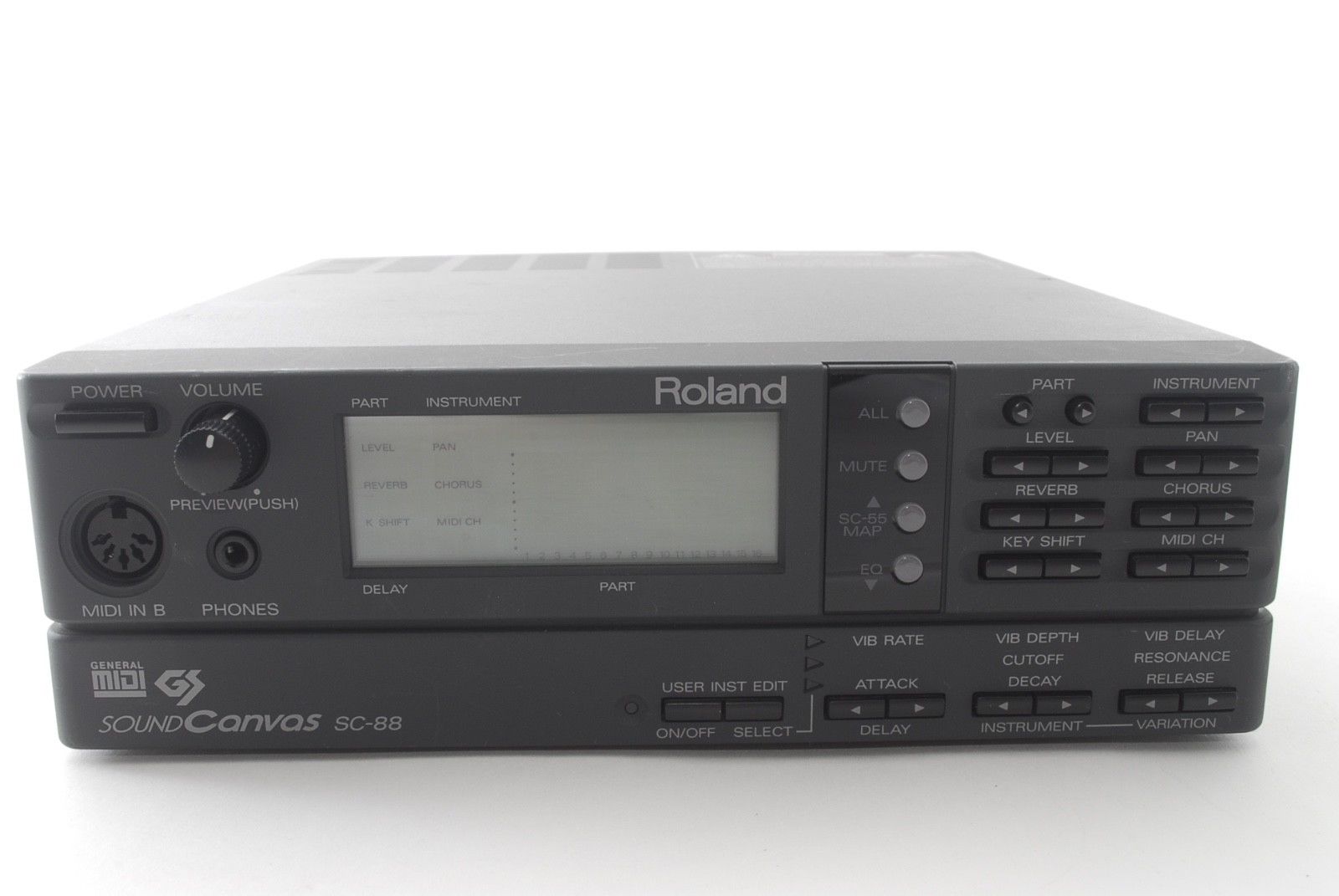
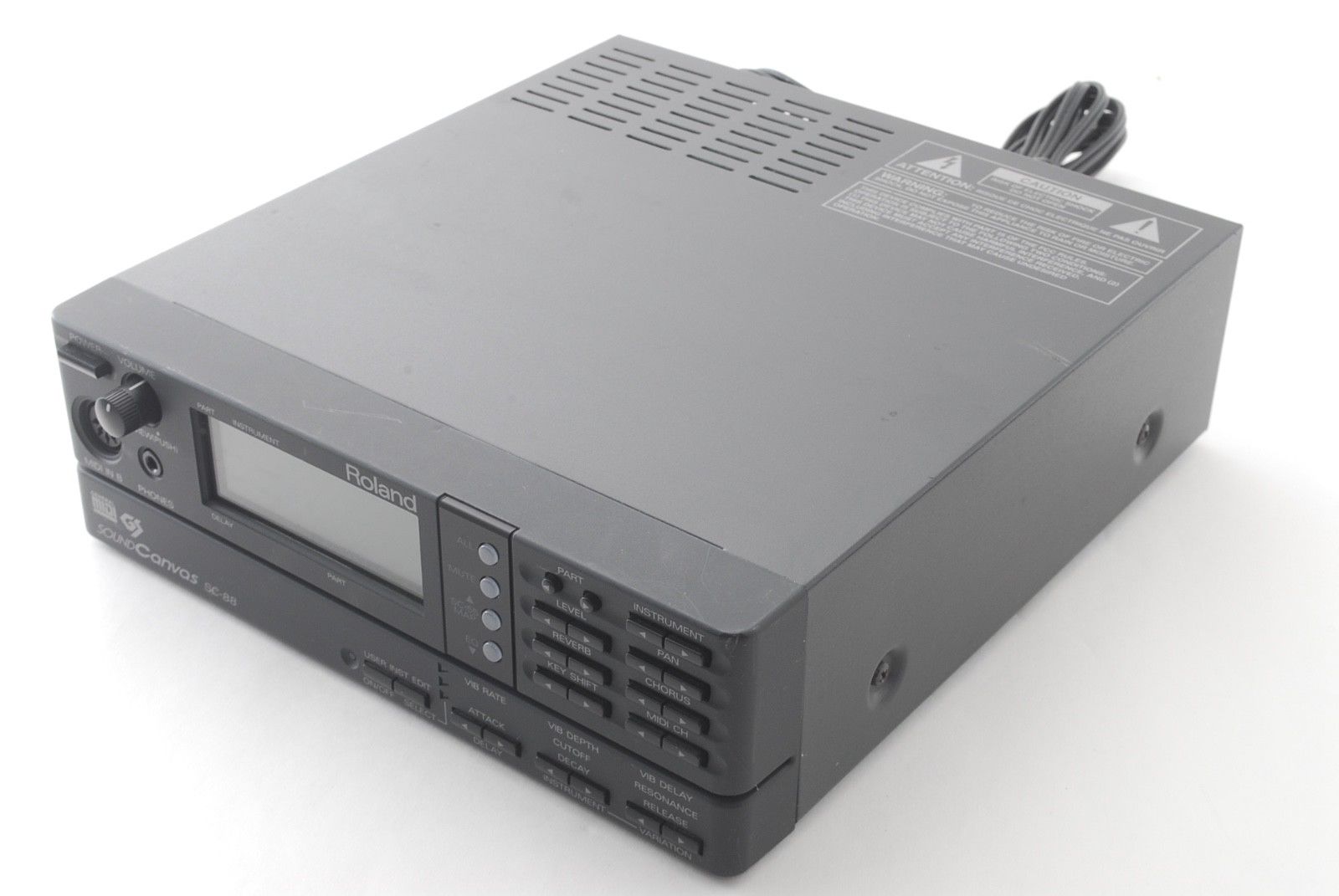
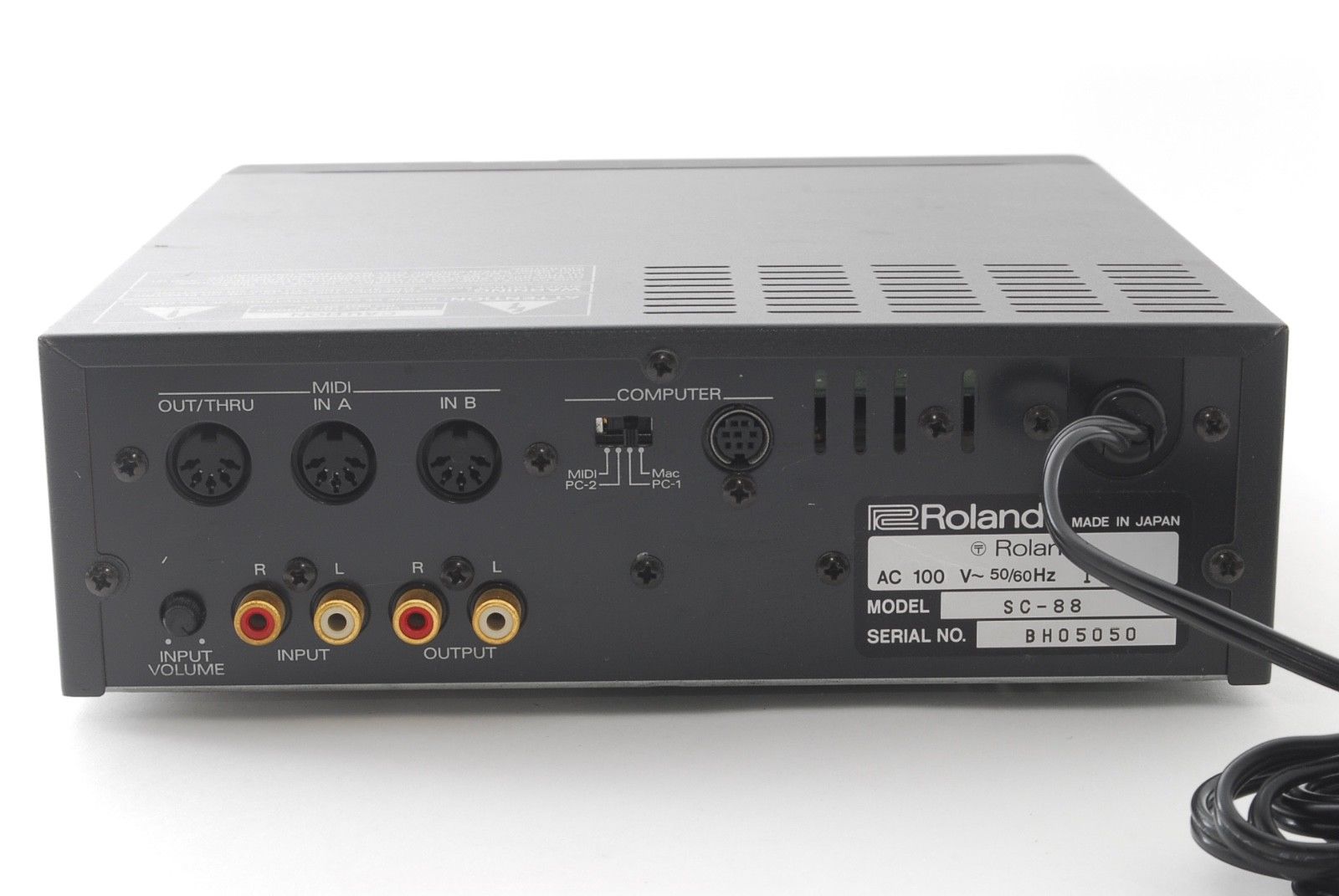
I picked it up for £71.13 plus postage from Japan (£30). One difference about the SC-88 series over the SC-5x series is that it doesn't have a DC power socket on the back - the PSU is inside the case. In my case I knew I'd bought a 120V AC version, so I also purchased a step-down transformer to convert my domestic 240V mains down to 120V. These cost about £9 on Ebay. This was still a good deal looking at Ebay's 'sold' prices and other Buy It Now prices of SC-55s and SC-88s which ranged from £118 up to £186 after postage was added.
Note that on the back of an SC-88 is a 4-way switch. This needs to be set to 'MIDI' when connected to a PC.
Total outlay in 2017 including delivery:-
- Roland MT-100 = £67.99
- Roland SC-88 = £101.13
- Step-down transformer = £8.99
TOTAL = £178.11
Here's a rough setup if you have both an MT-32 + interface card and a GM synth like an SC-55 or SC-88...

1) The "OUT" from the MPU-401 interface (in my case, the game/MIDI port on the sound card) is connected to the MIDI IN on the first synth (the Roland MT-100). A second MIDI cable connects the first and second synths together by going from the first synth's MIDI THRU to the second synth's MIDI IN.
2) The outputs from both synths are then sent back to the PC sound card's "Line In", where the software mixer for the sound card merges all sounds together (including digital sound effects from the sound card itself). The problem with the above approach is that the MT-100 must be switched on for the MIDI messages to get out of the MIDI THRU and into the SC-88. This is fine though - you just need to press ALL + MUTE on the SC-88 when you want to let the MT-32 play.
3) The mixed sound is then sent from the sound card to the powered speakers.
** UPDATE 8th Dec 2018 - MT-32 Purchase! **
Today I won an EBay auction for a Roland MT-32 "old". Its description was:
"Vintage Roland MT-32. Very good condition. Comes with original box and power supply. The box has a few tears. Fully working. No significant scratches and LCD screen is fully working. Does not come with original manual but I have enclosed a printed copy of a downloaded version."
What was surprising was that the bidding remained at just £61.01 until the end with just 2 bidders in the running. It was an opportunity I didn't want to miss out on but I can ultimately live with my MT-100 which allows me to play MT-32 games albeit with some samples being 'off' in some early games that were designed for the MT-32 "old". So I offered a maximum bid of £102.15 which as it turned out was £2 more than the next highest bid! That's a pretty decent price at just £1 more than I paid for my SC-88. Here are some pics:
I'm so pleased with this, as my MT-100 (basically an MT-32 "new") does produce odd sounds in some of the older games that were designed for the MT-32 "old". I will do a deeper dive once it arrives!
It has ROM version 1.06.
**UPDATE 13th February 2021**
I recently converted my Roland SC-88 to run on 240V, and since then have been experiencing a problem where it's not outputting audio all the time and when it does it frequently shows a 'MIDI Buff. Full' message on the screen. I checked the MIDI cable but ruled that out as the cause because it's working fine with my MT-32. So I've been looking around for another GM synth. I was really looking for a Roland SC-55 but these seem to be getting more and more expensive, with the current market value sitting around £112 (Mk I) to £156 (Mk II).
So today I bought a Yamaha MU80! It cost me £96.25 including P&P (13% below average market value). It has a slight scratch on the top, but aside from that it's in great shape. Here are the pics:
The MU80 is another very popular synth and will be a great addition for games that support General MIDI. When it arrives I will record some games audio using it and post them up on the dedicated game pages here at DOS Days.
UPDATE: I bid on another working Roland SC-55 at auction... I eventually won it for £93.77 + £5 P&P (12% below average market price), but on arrival it was non-functional. The seller hadn't claimed they had tested it (the unit came with no PSU), and so gave me a full refund, and they didn't want it returned.
I went to work repairing the unit, and quickly found the cause - a zener diode next to the 9V DC-in jack had failed. This is used to prevent damage to the rest of the circuitry in the event of a reverse polarity or overvoltage situation. I replaced the diode and it now works 100%.
This SC-55 has Control ROM version 1.21, dated 8th October 1991.
So my latest total MIDI project outlay looks like this:
Total outlay including delivery:-
- Roland MT-100 = £67.99
- Roland SC-88 = £101.13
- Step-down transformer = £8.99
- Yamaha MU80 = £96.25
- Roland MT-32 "old" = £102.15
- Roland SC-55 = £0
TOTAL = £376.51
